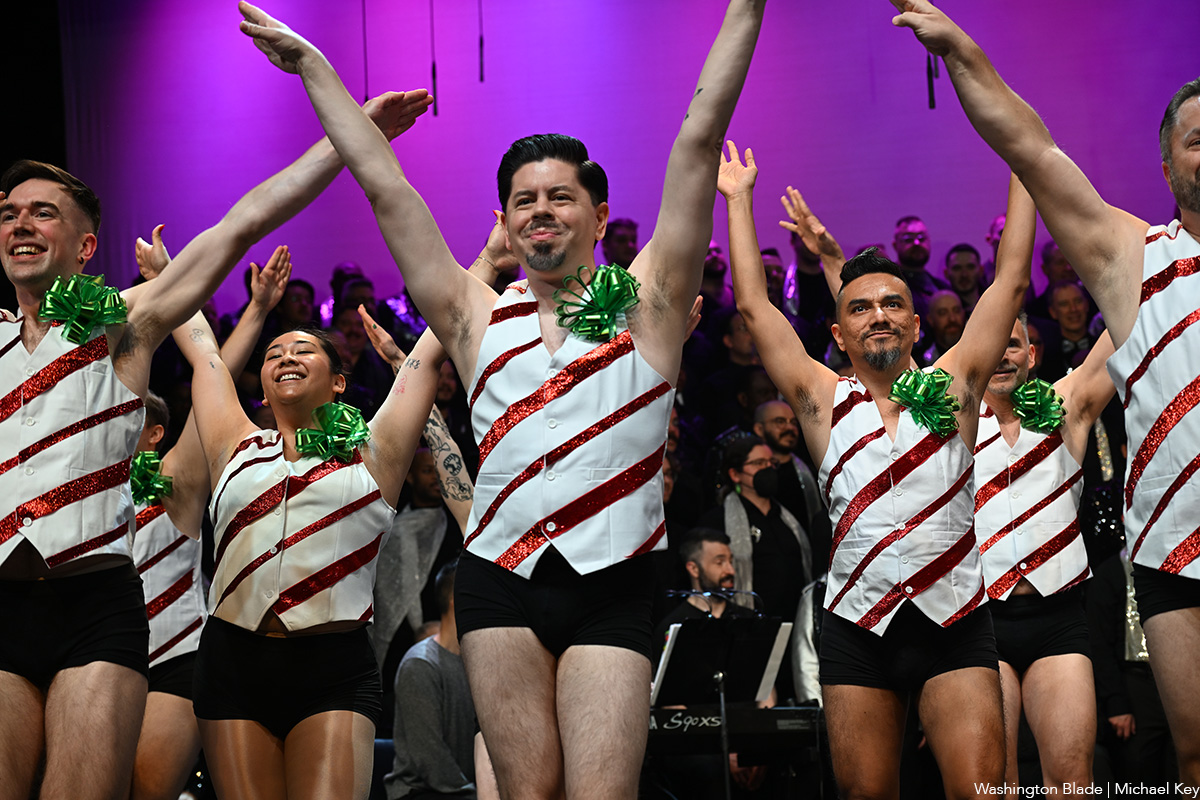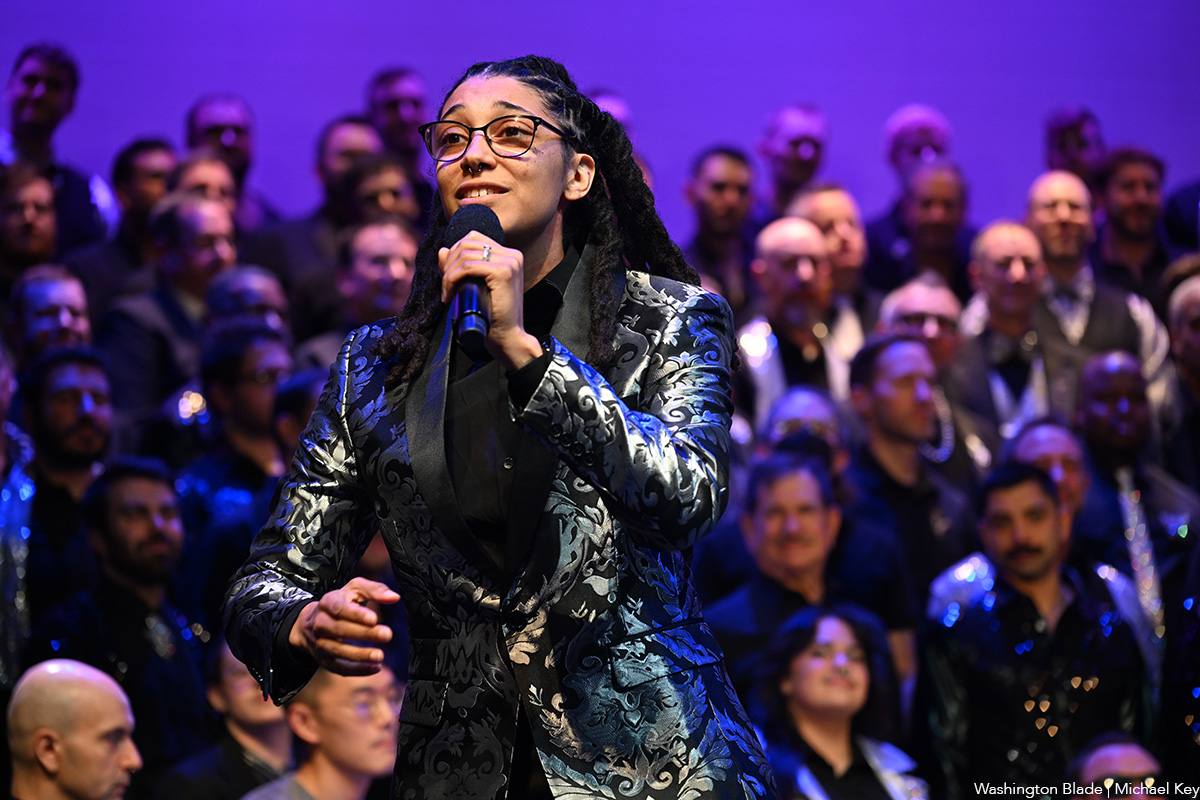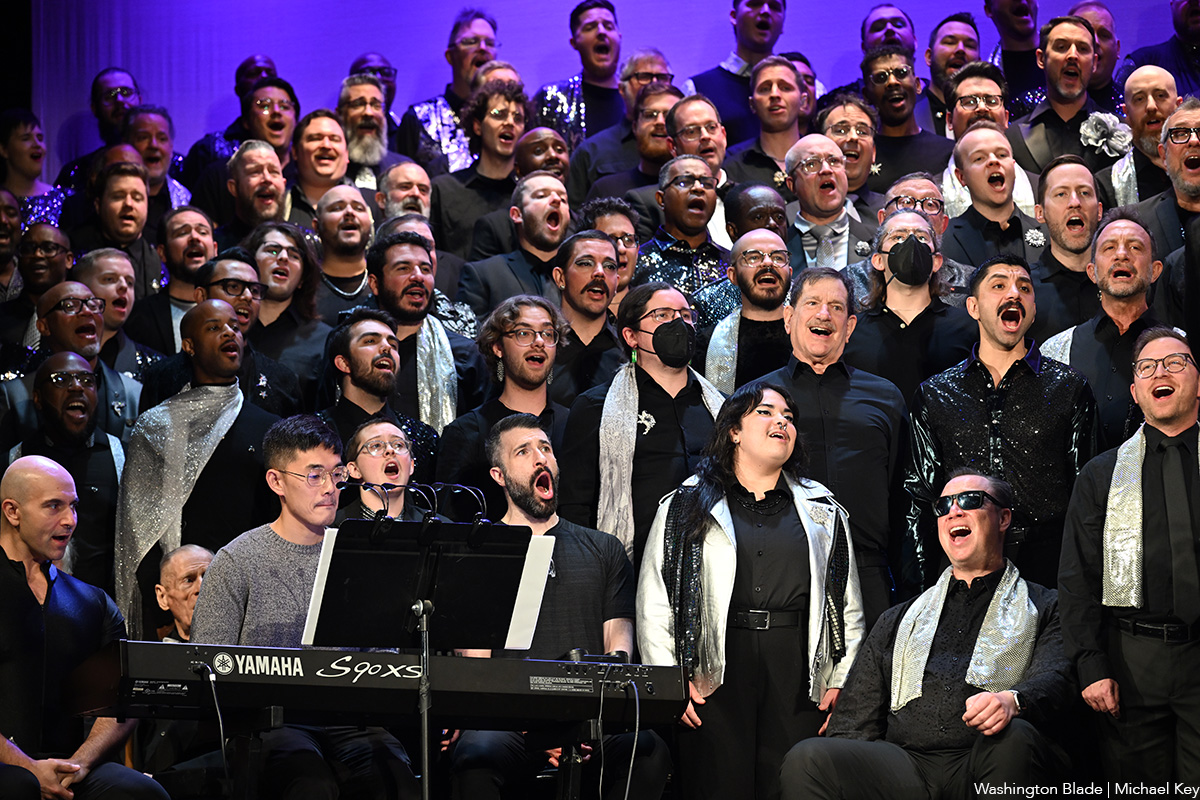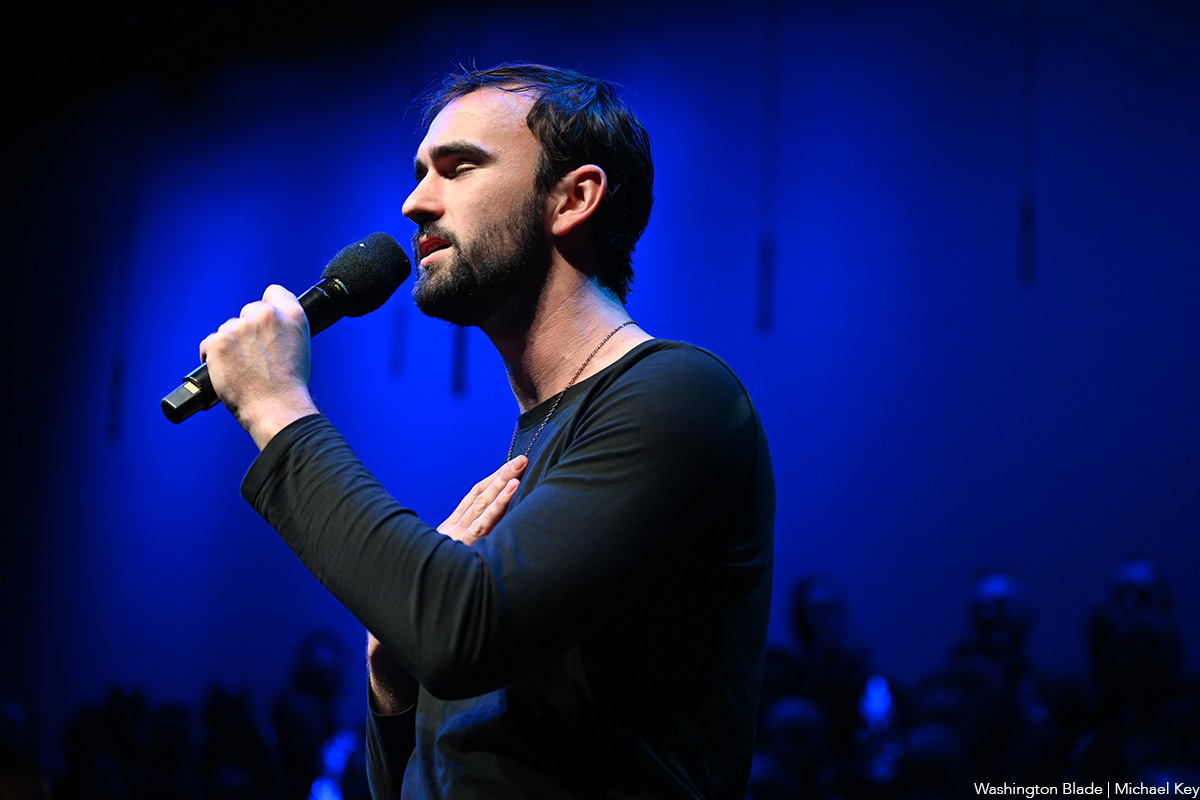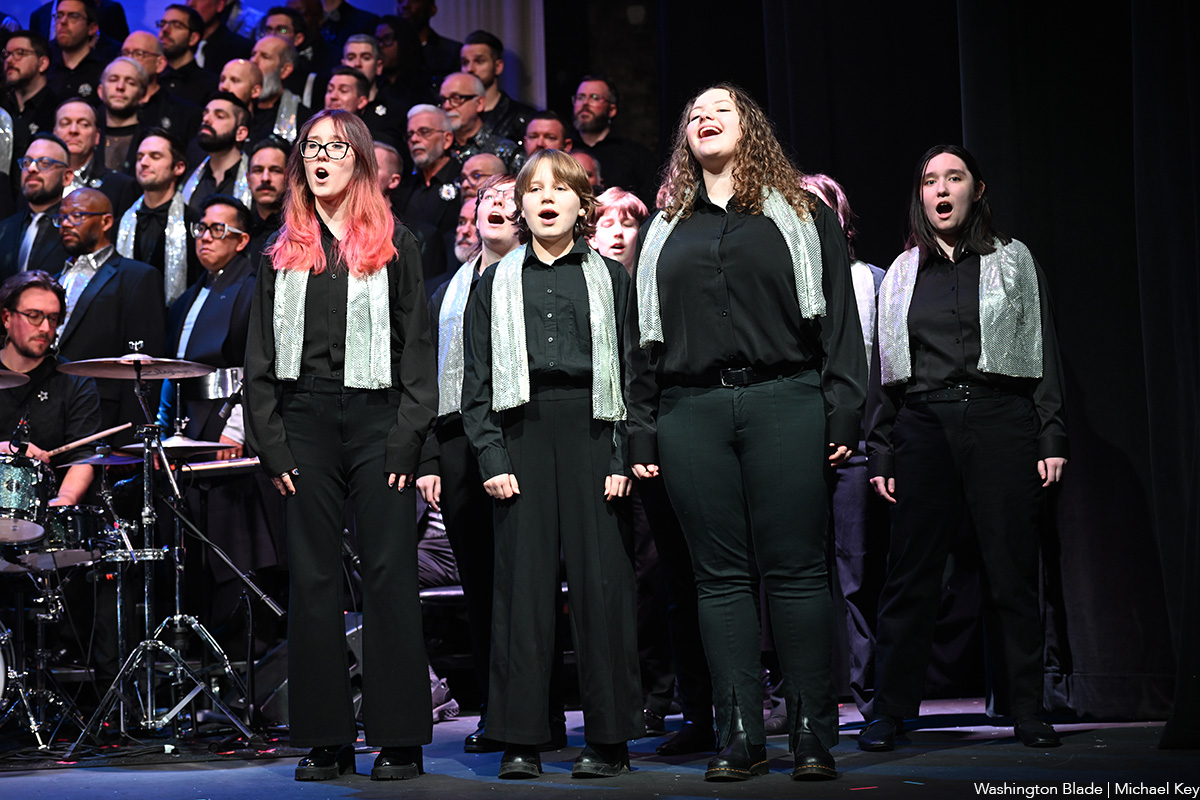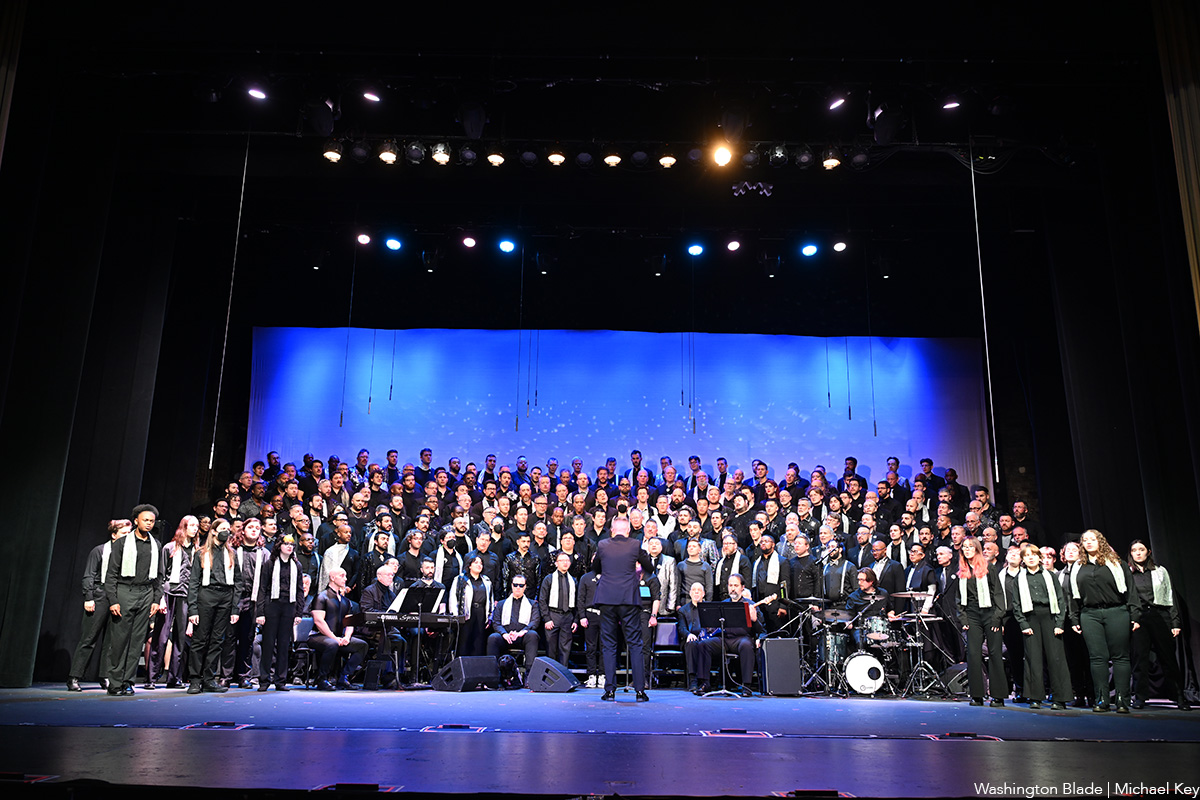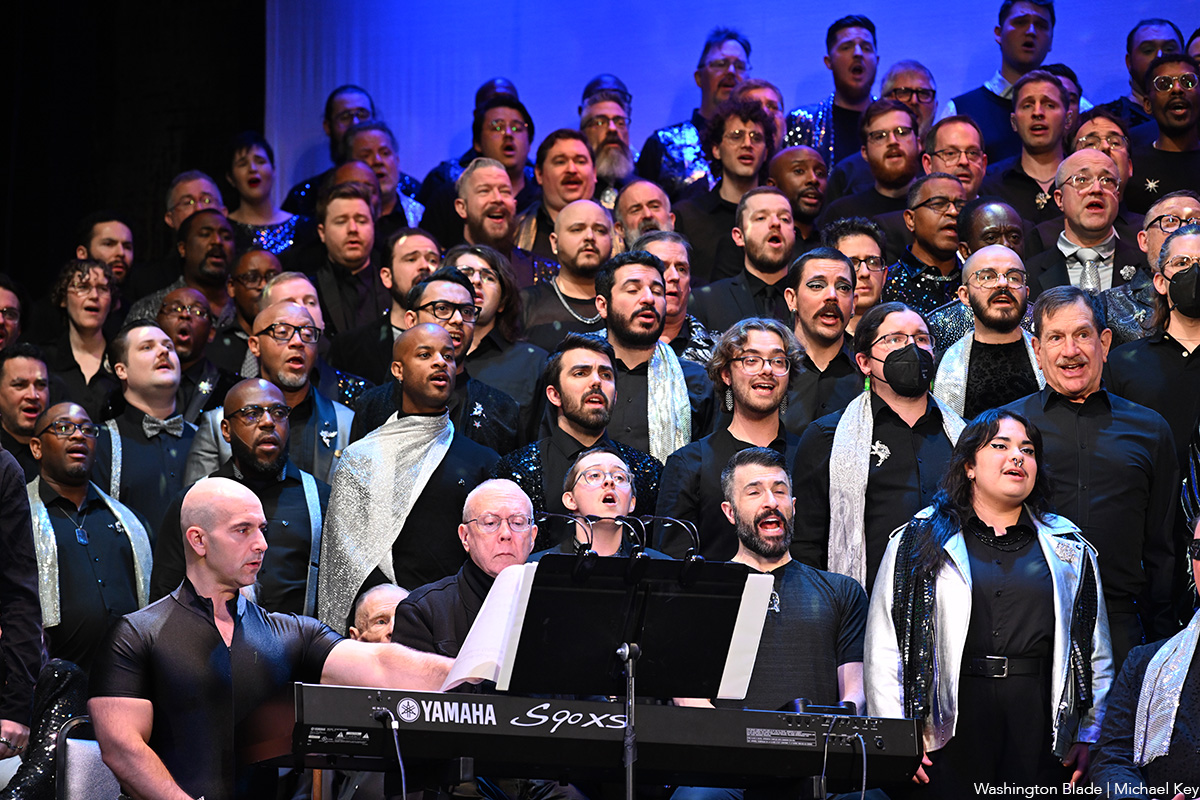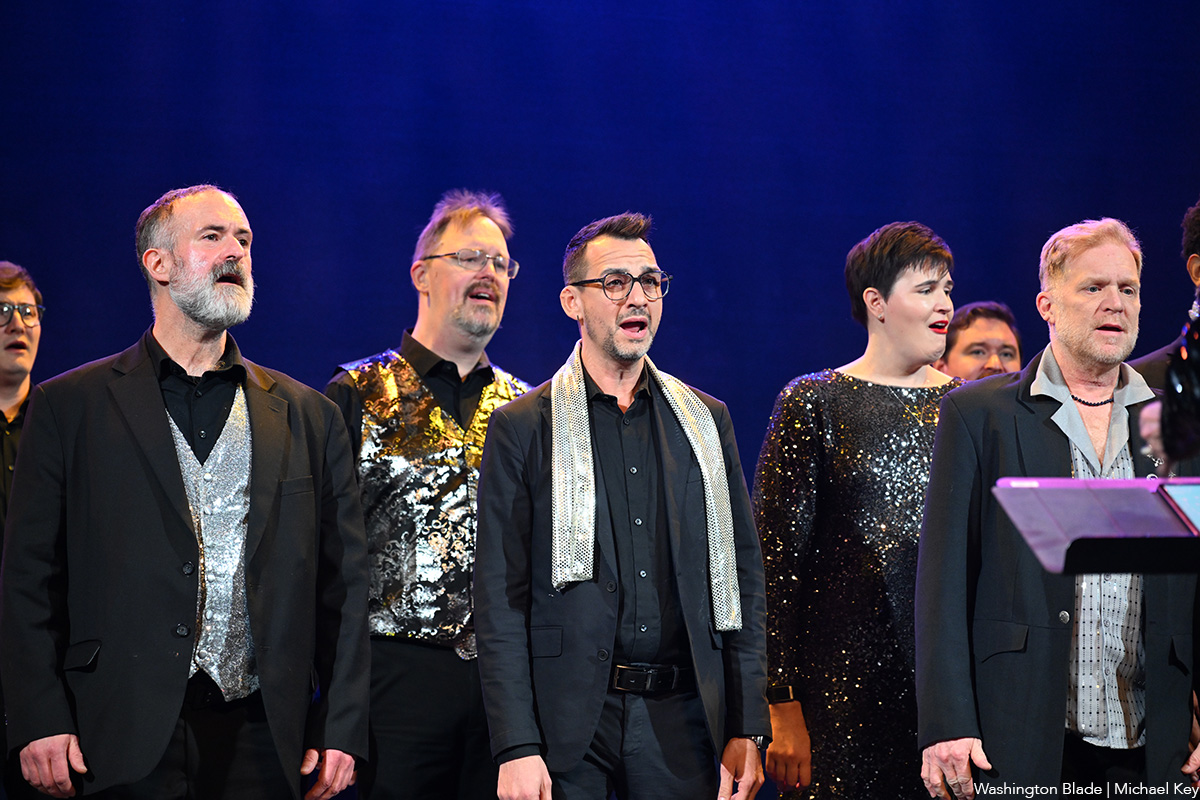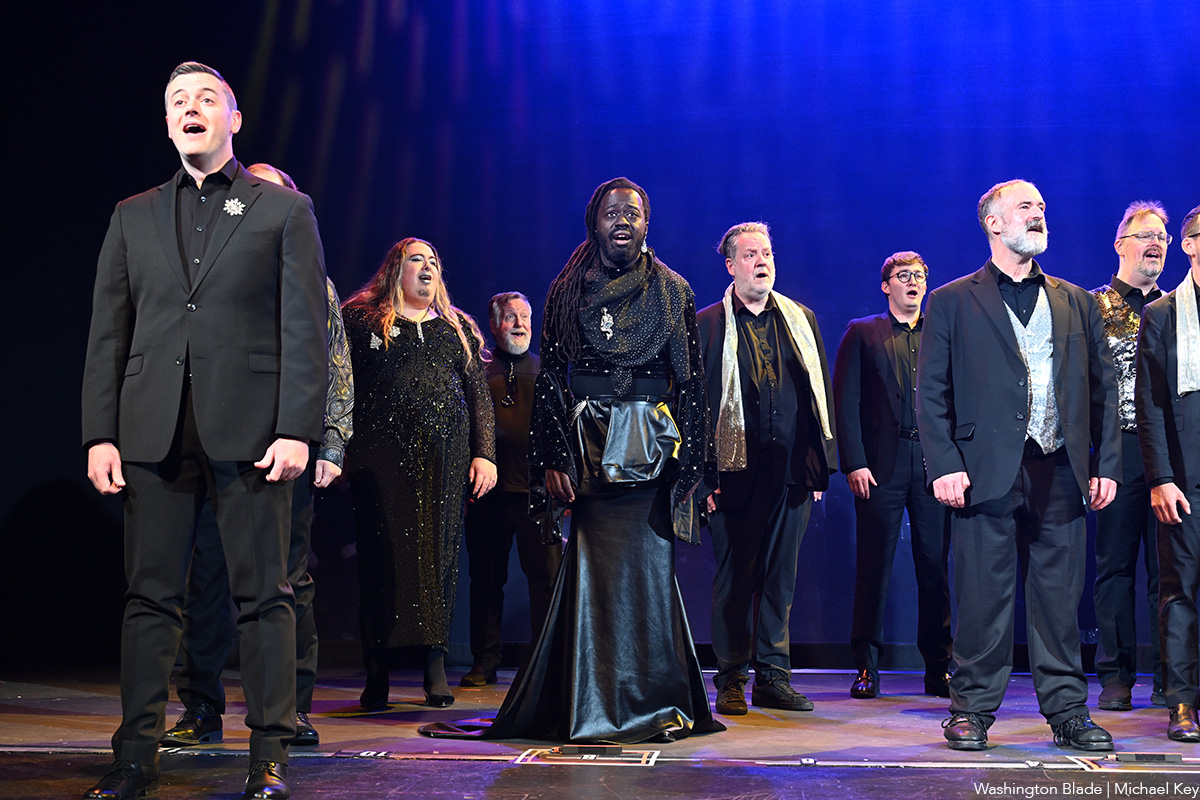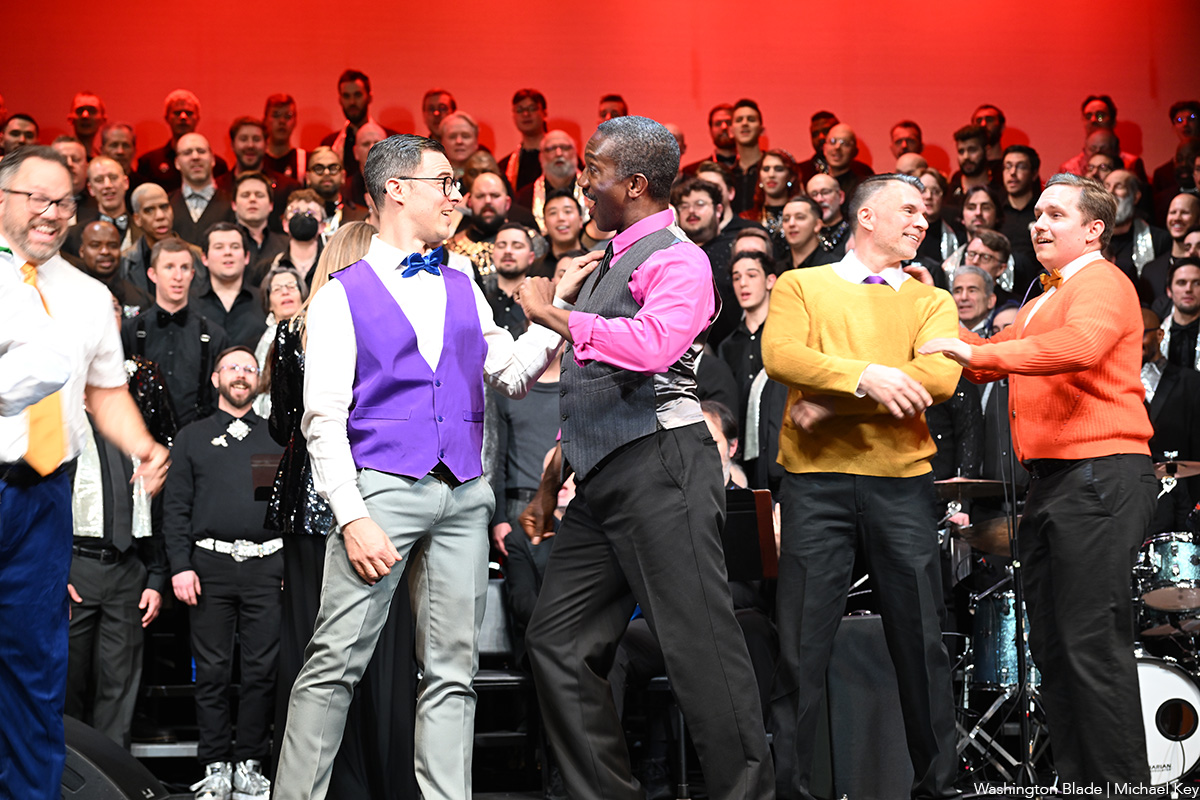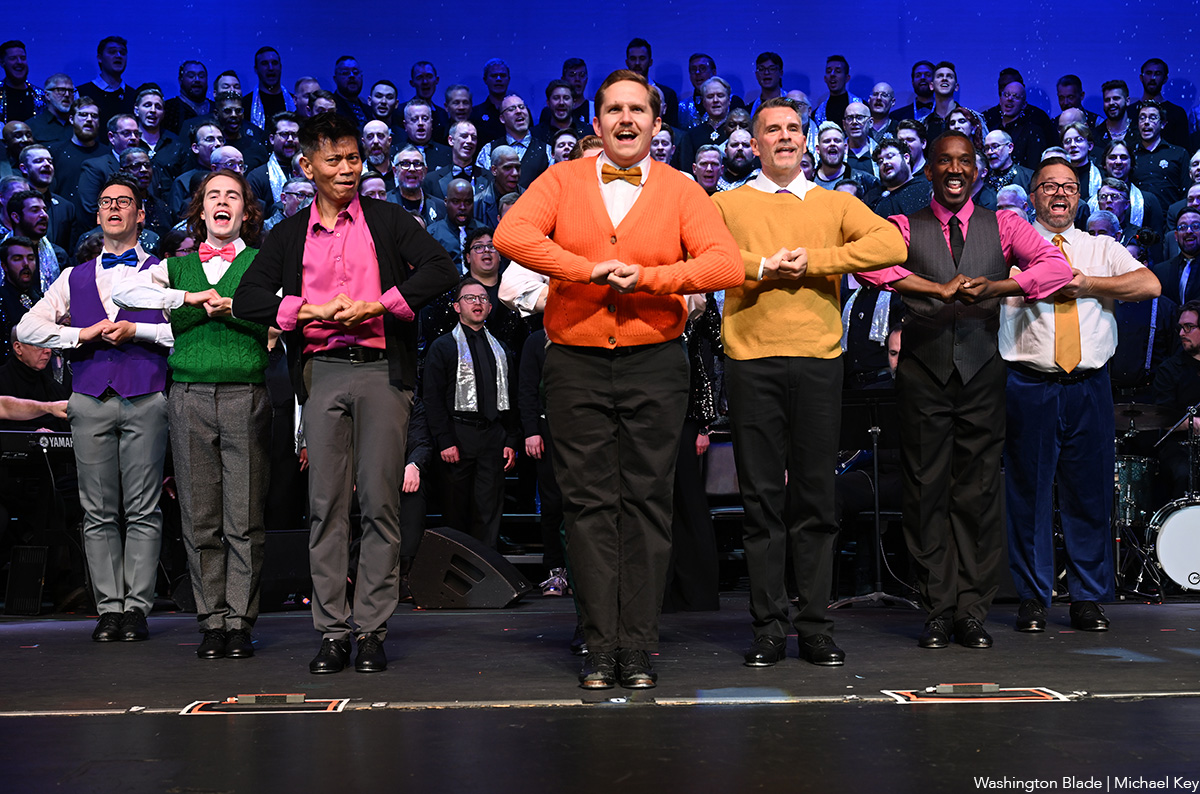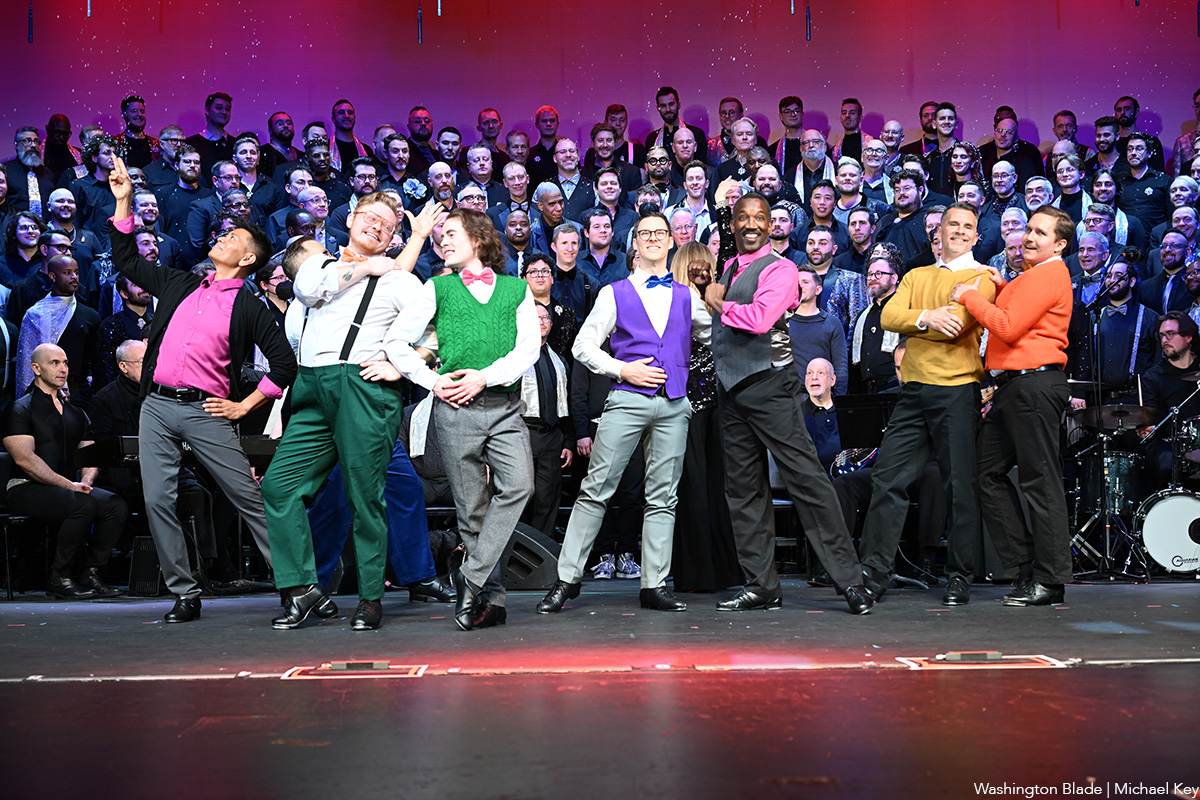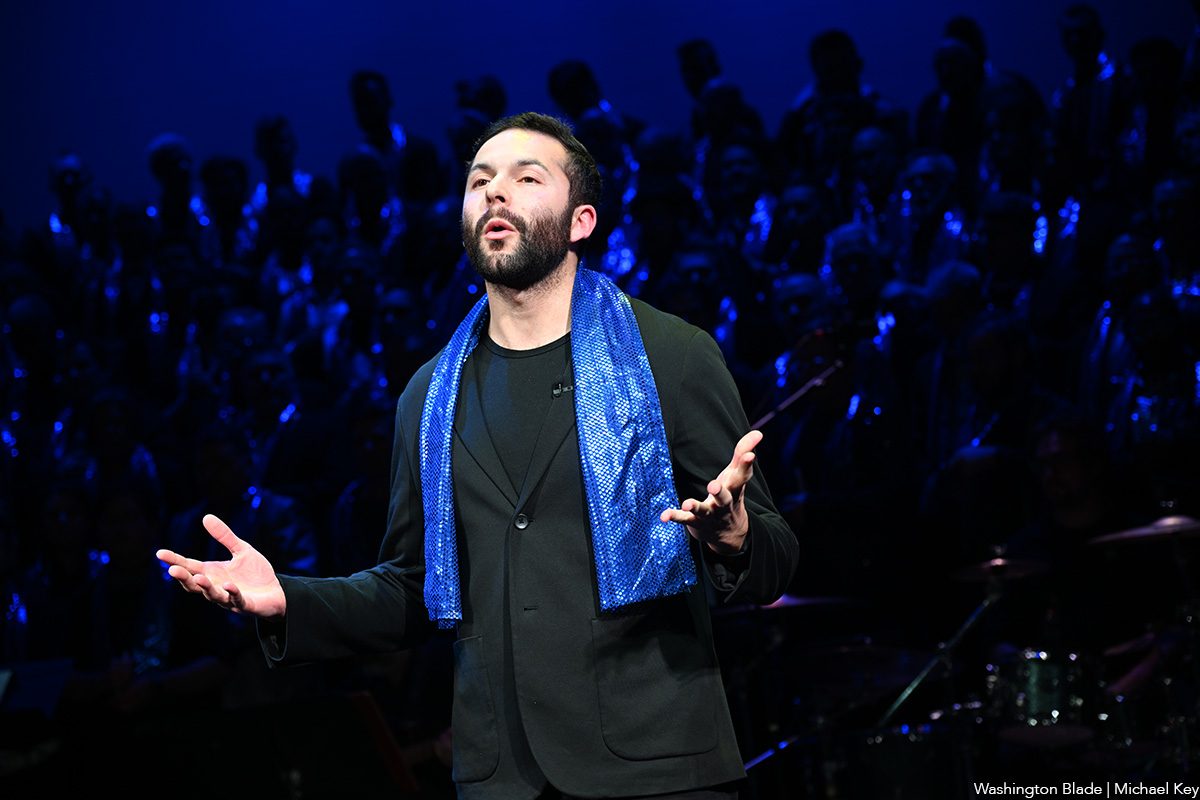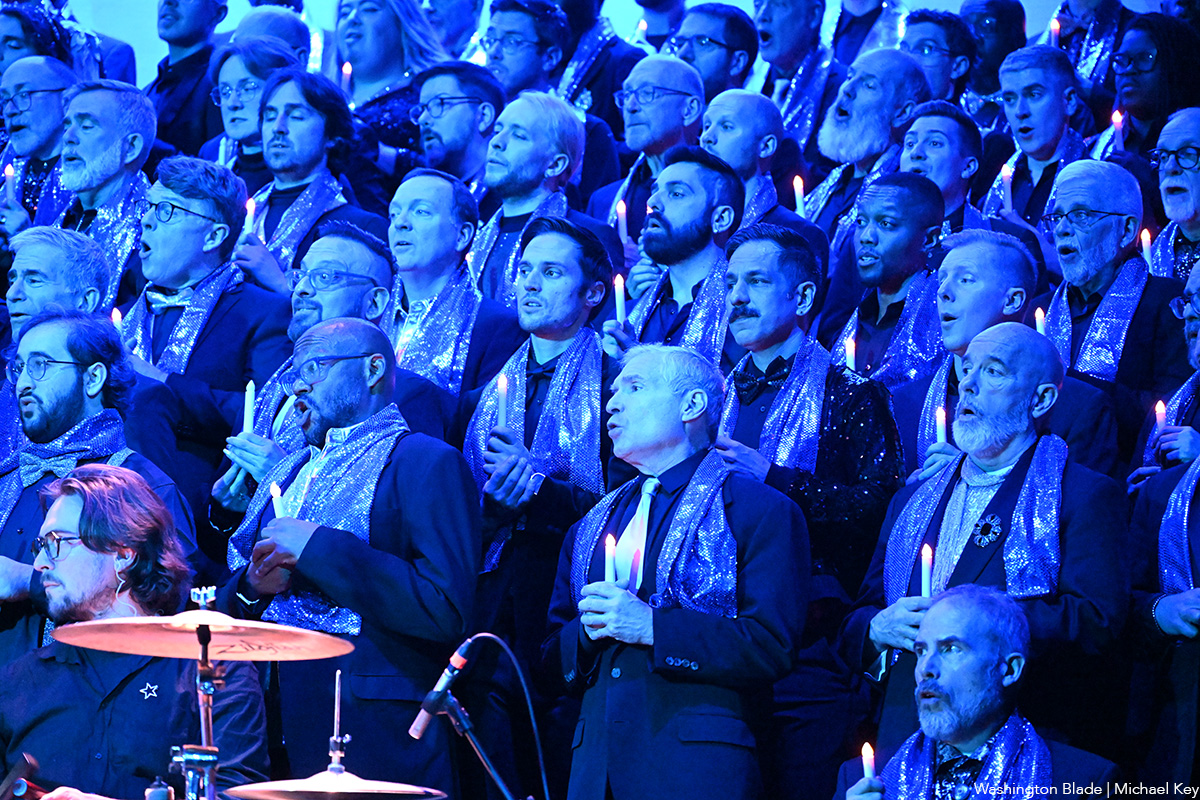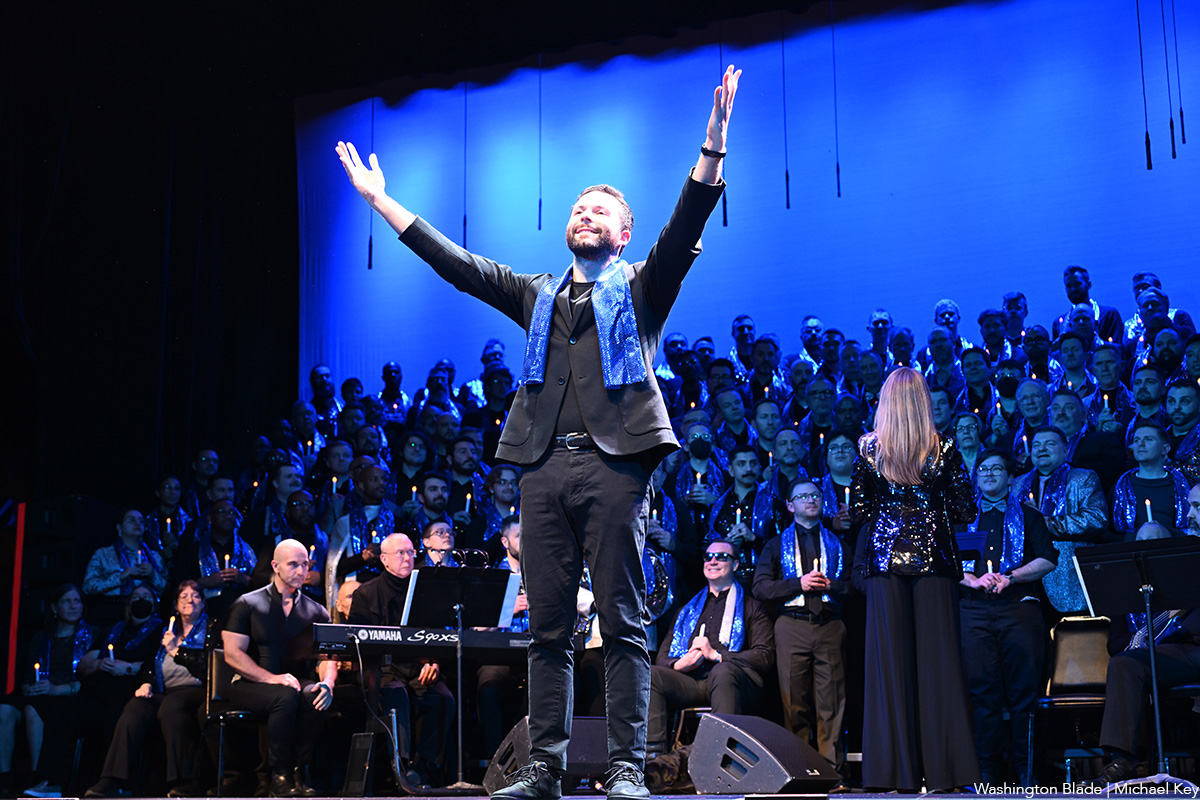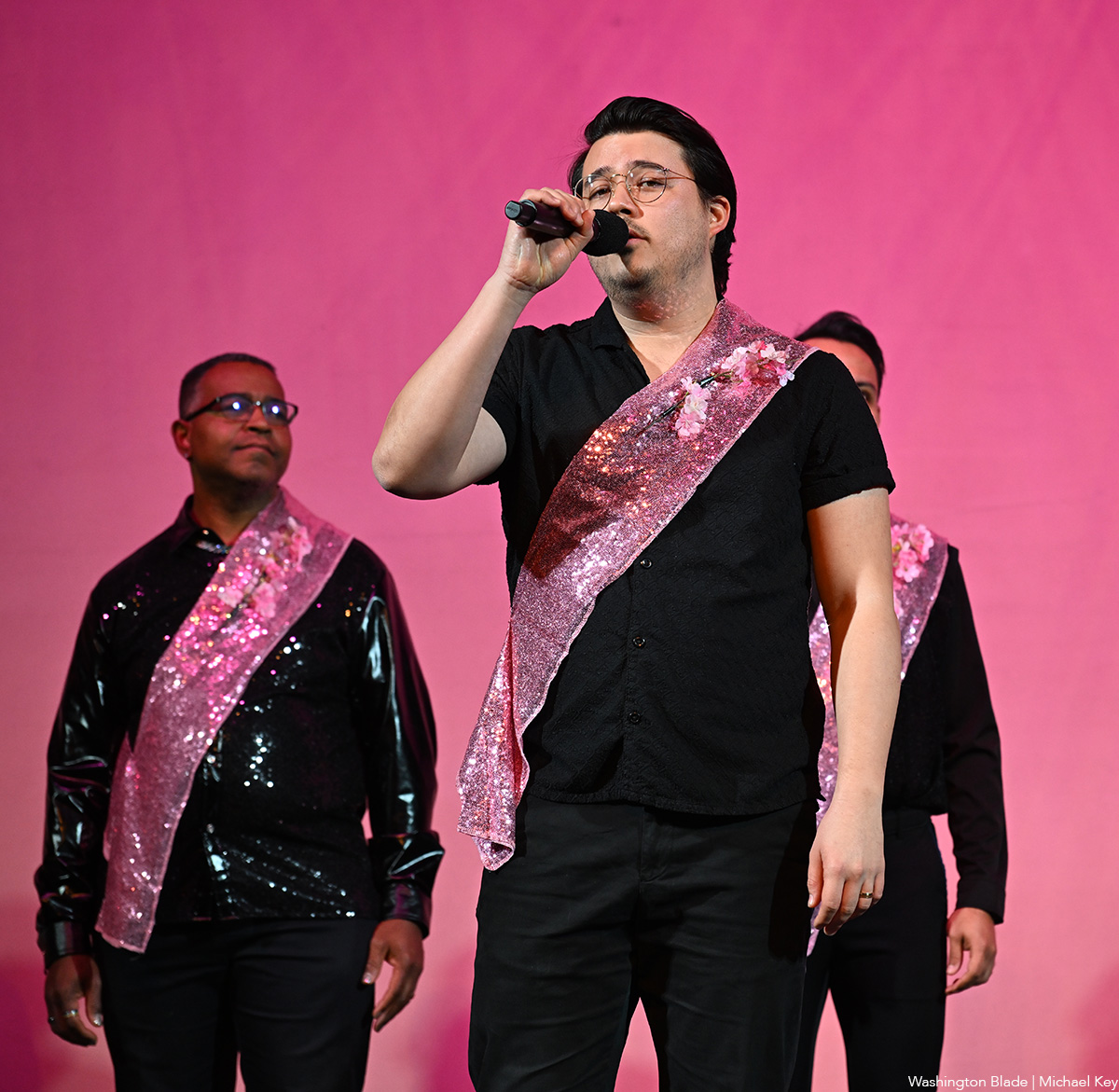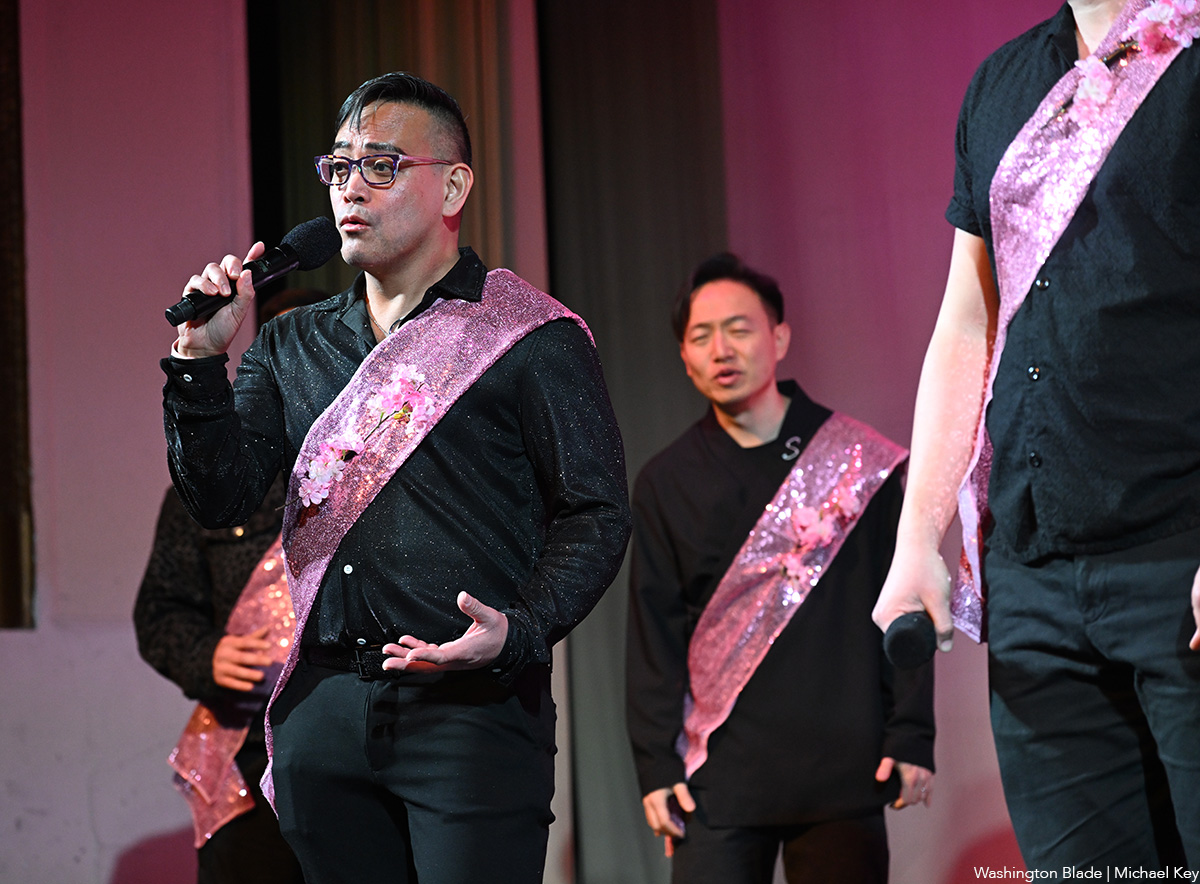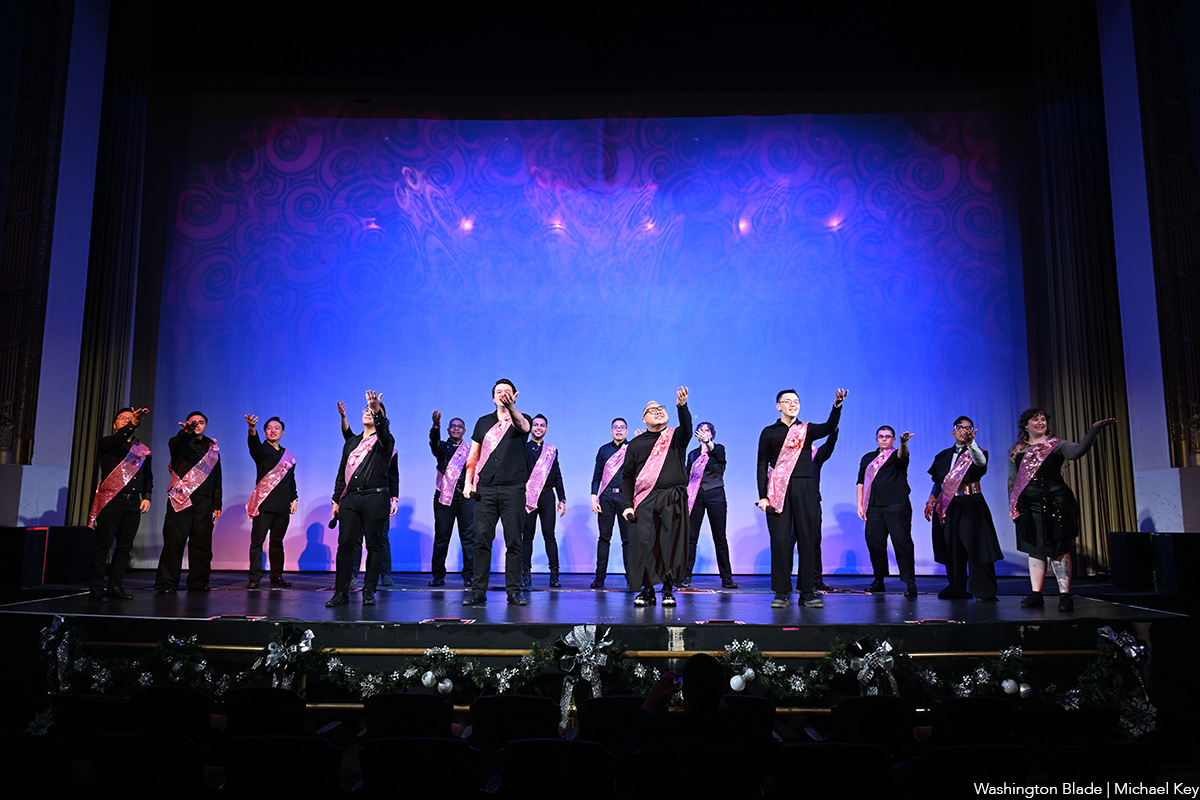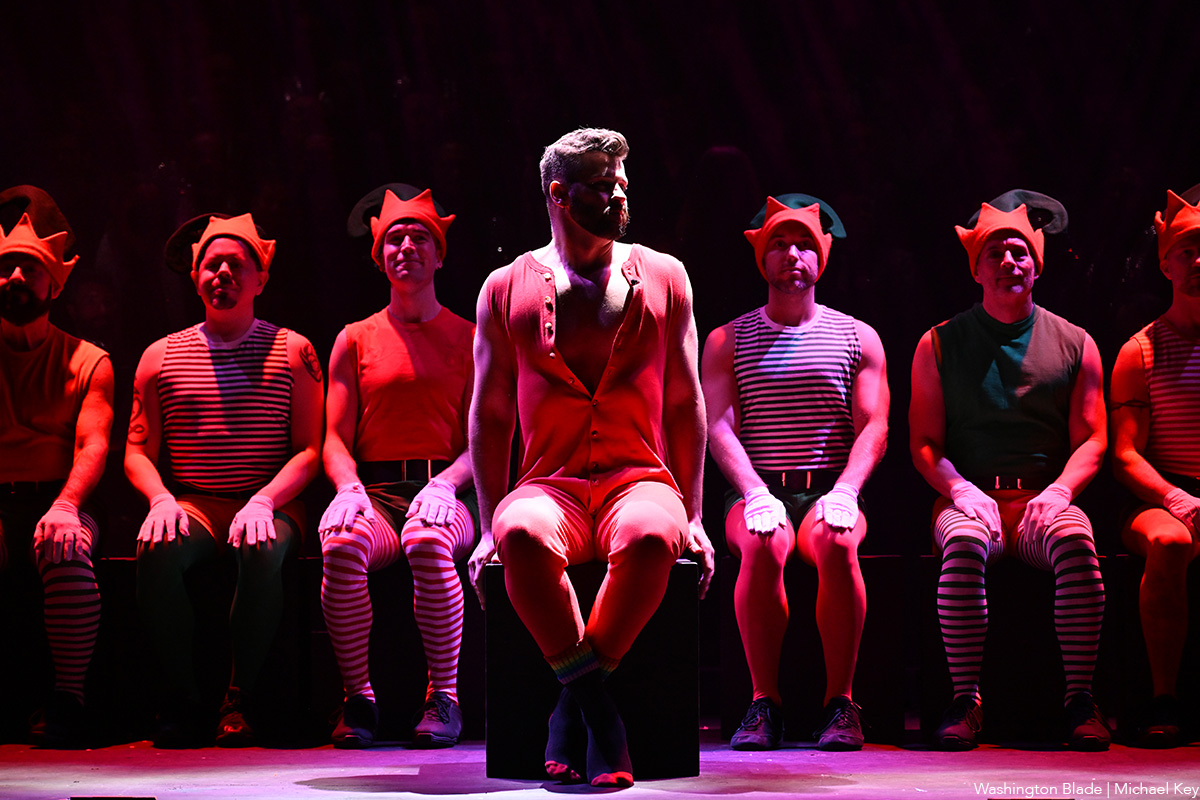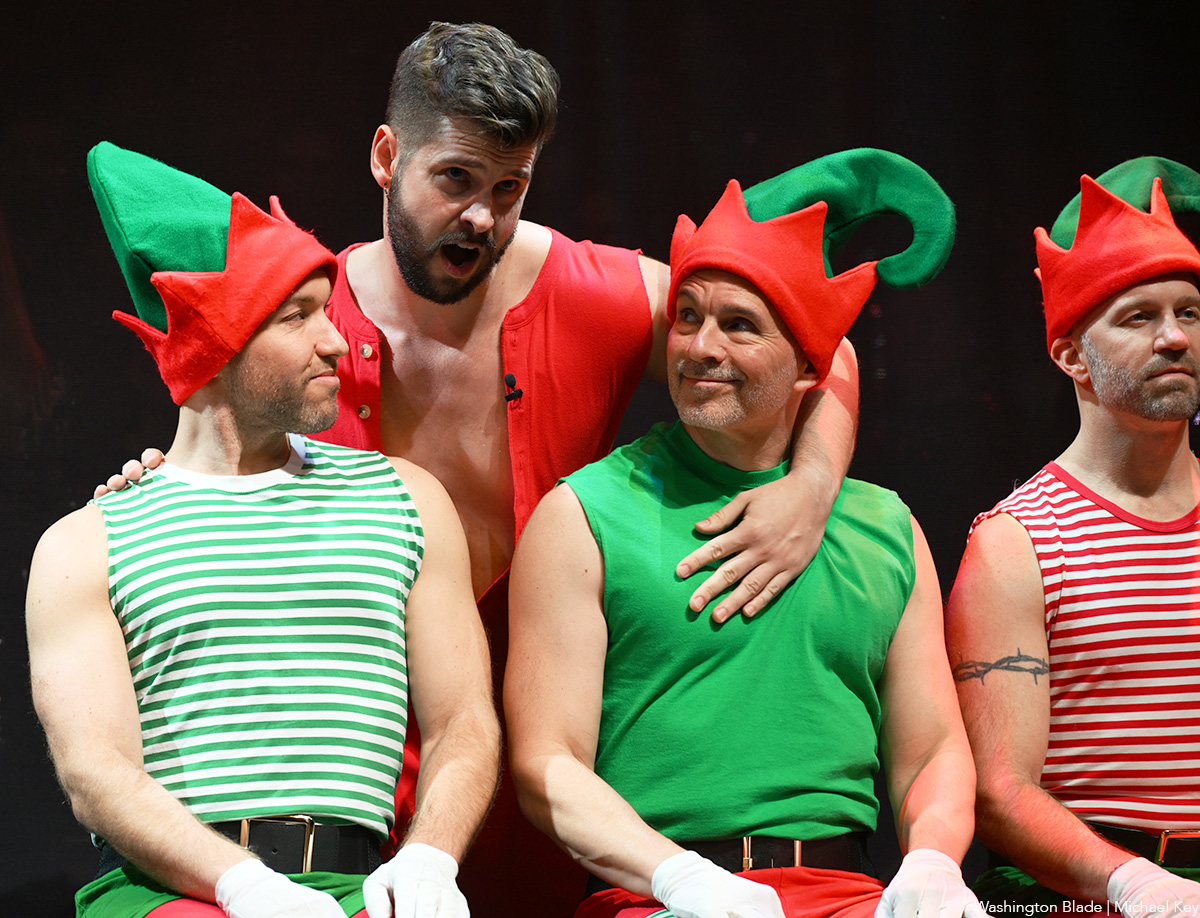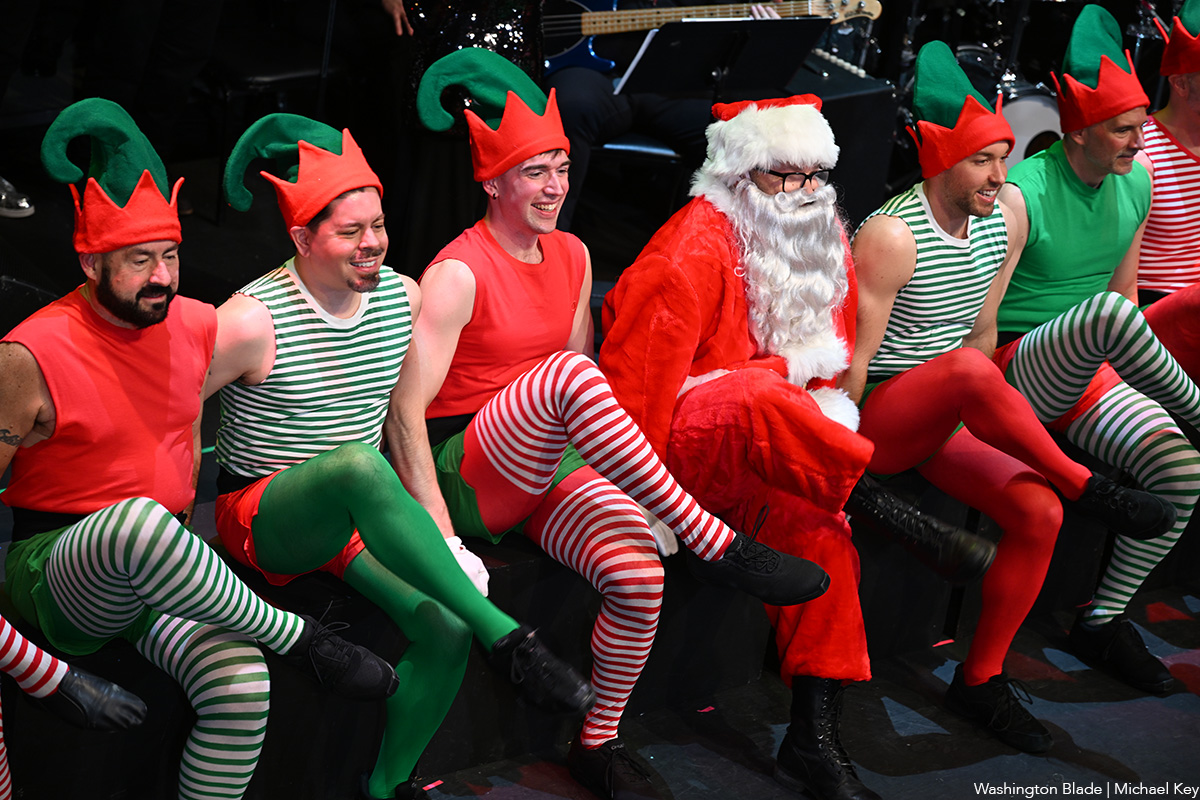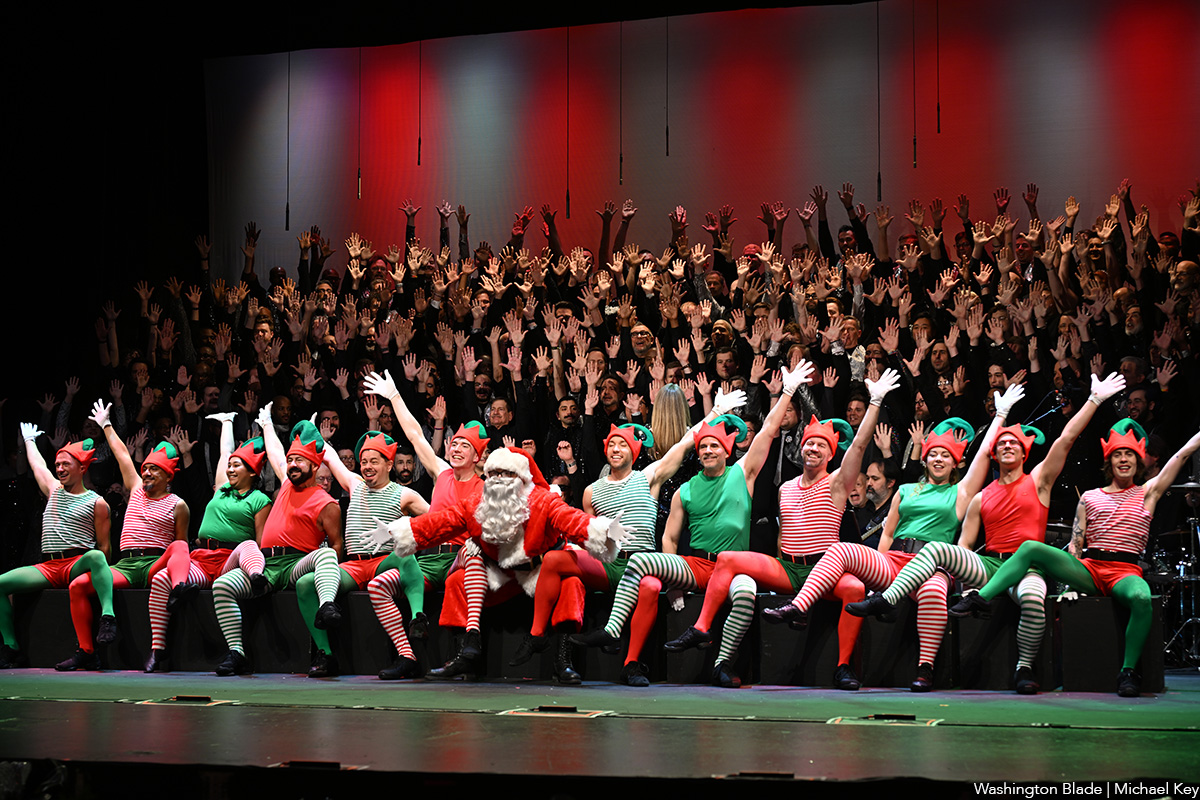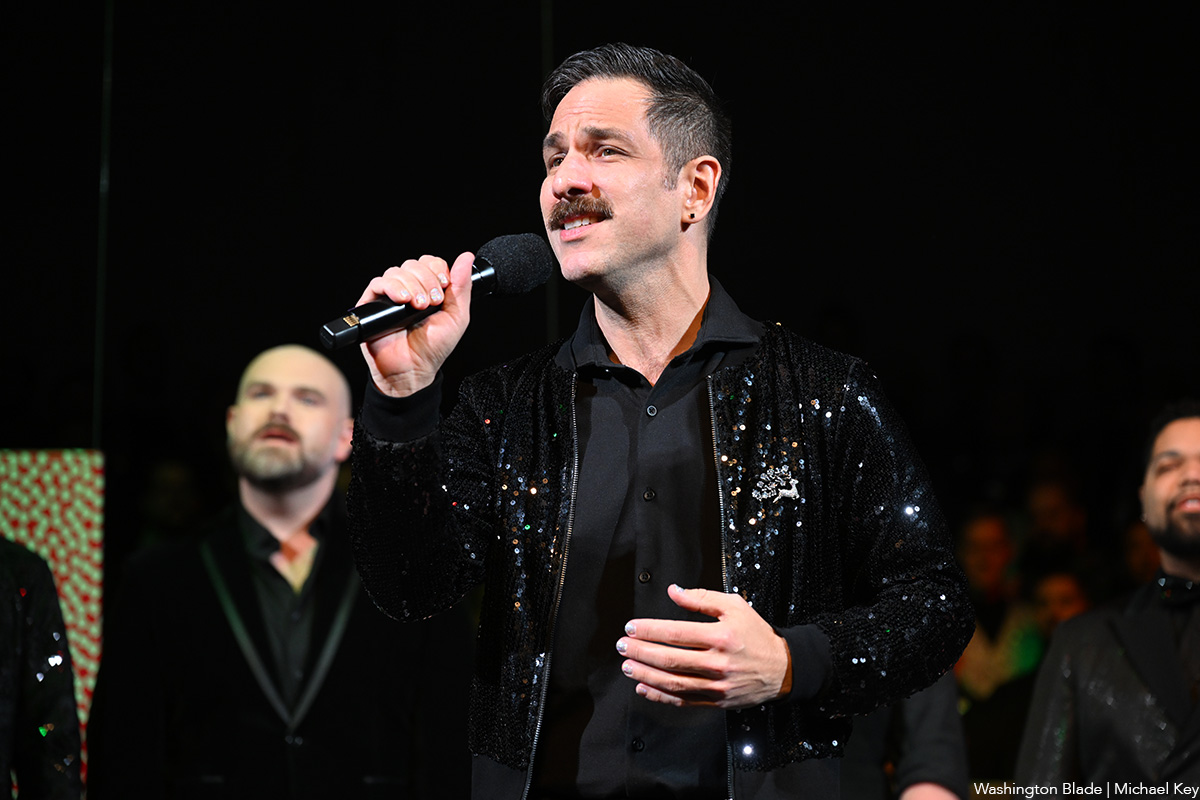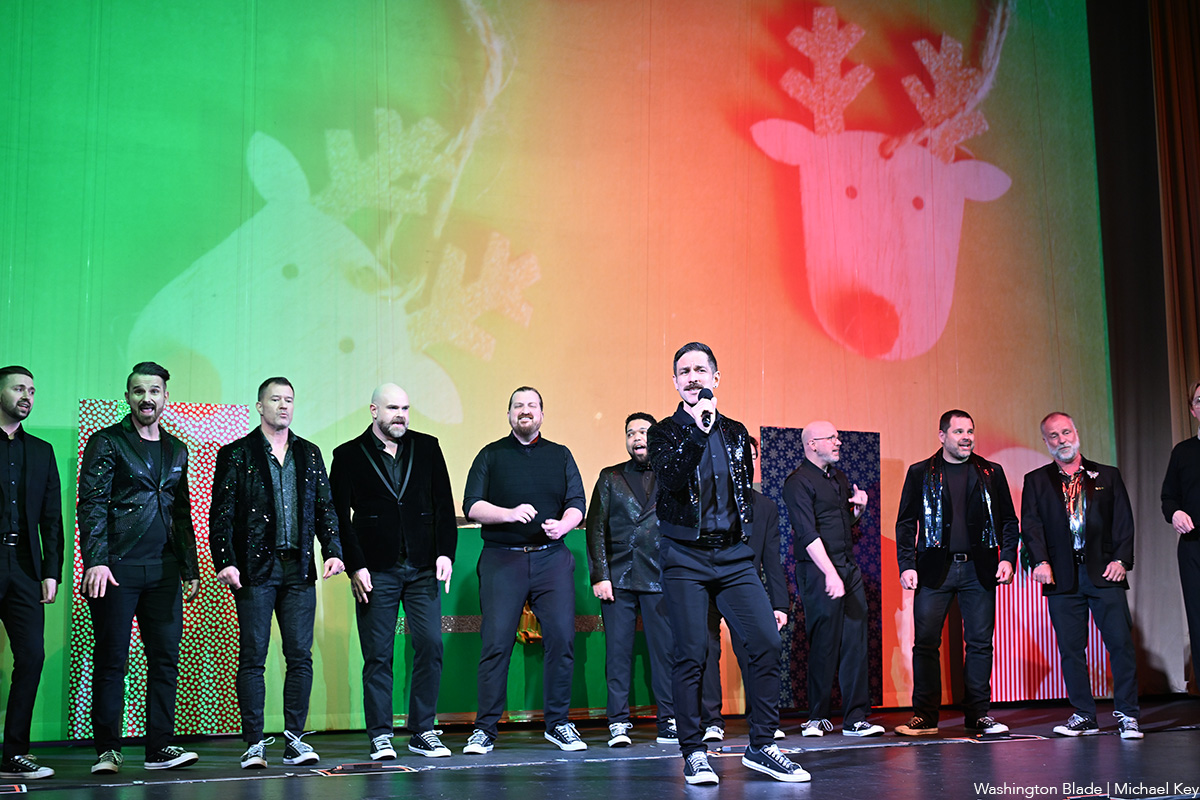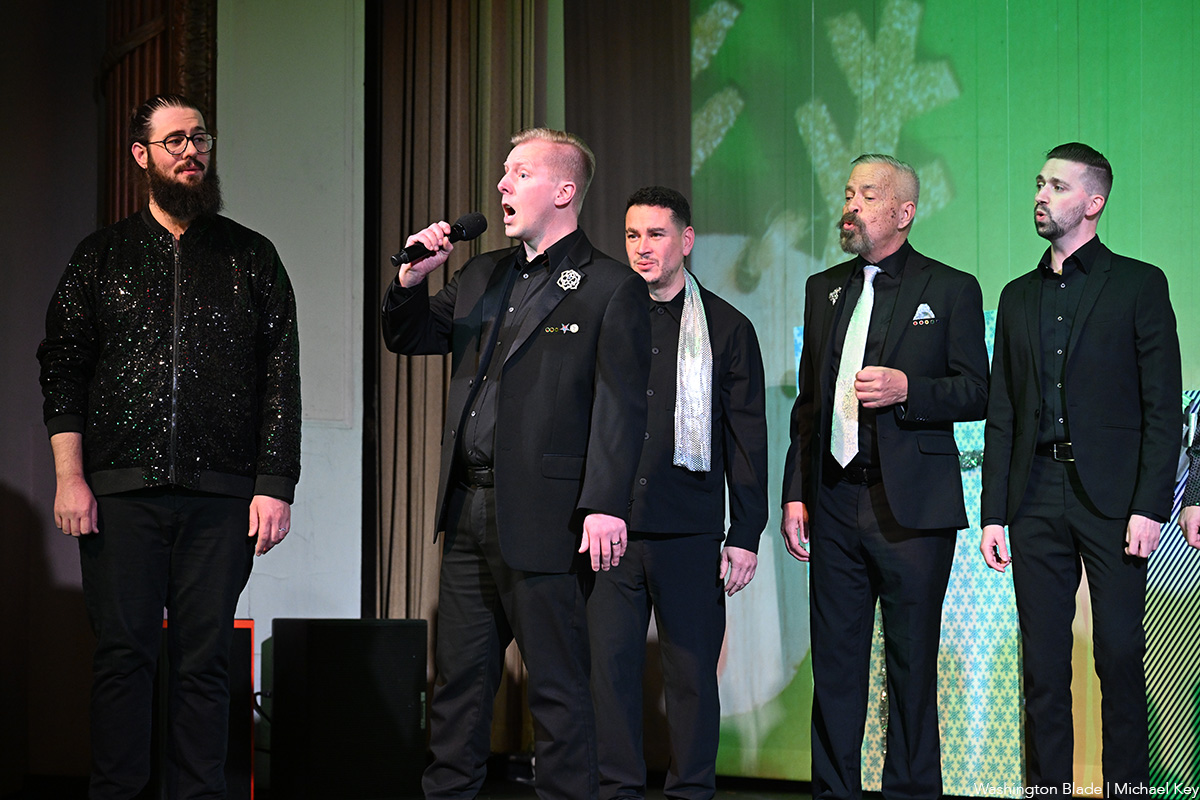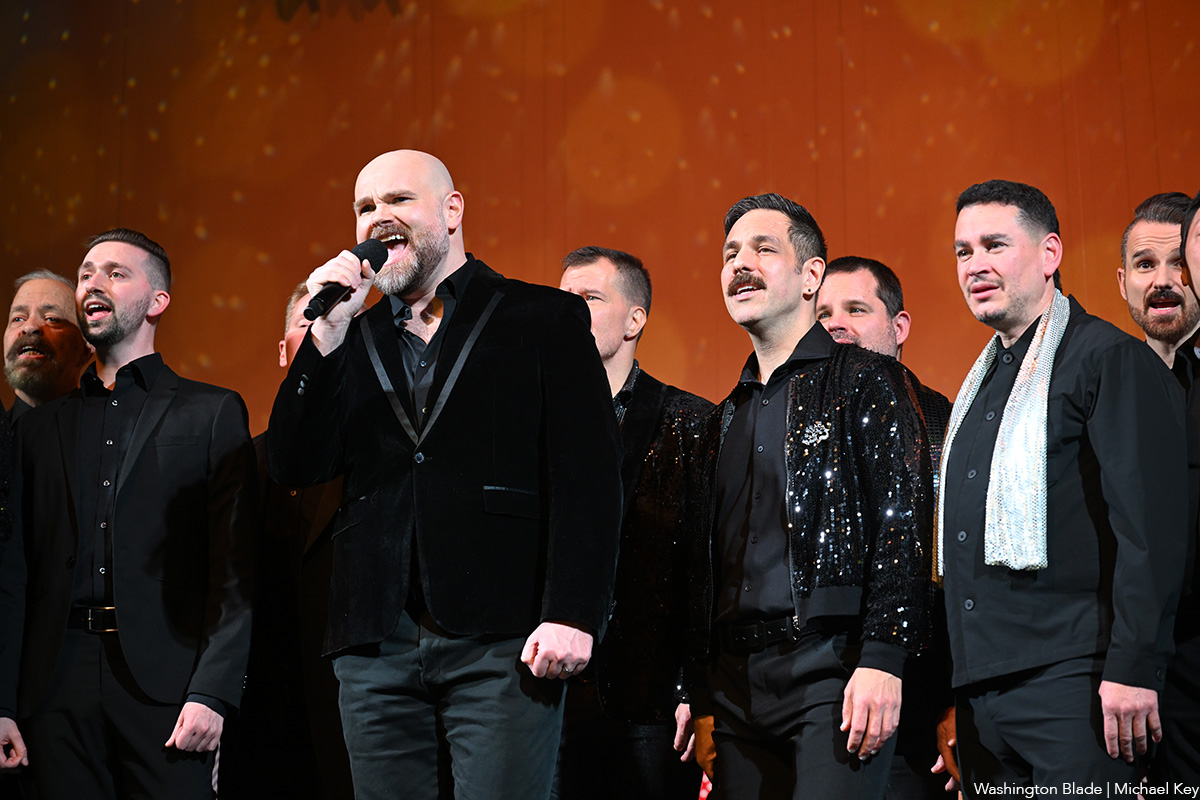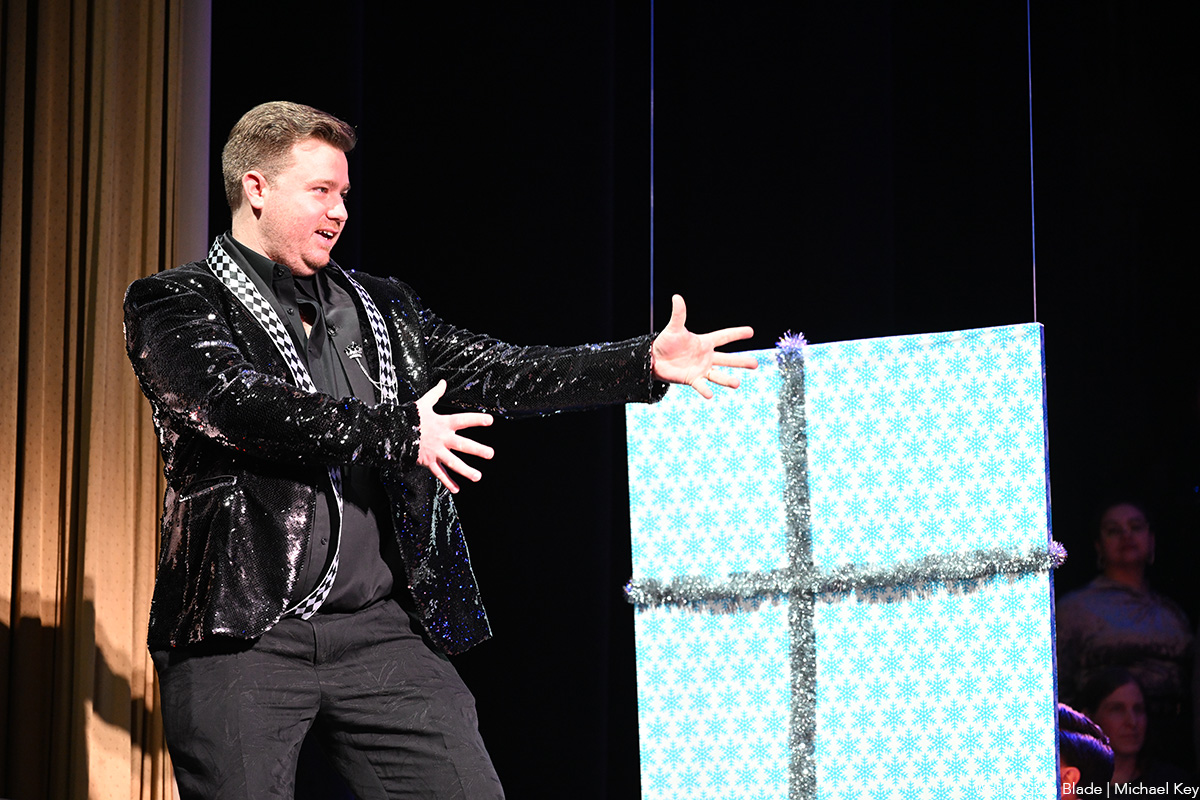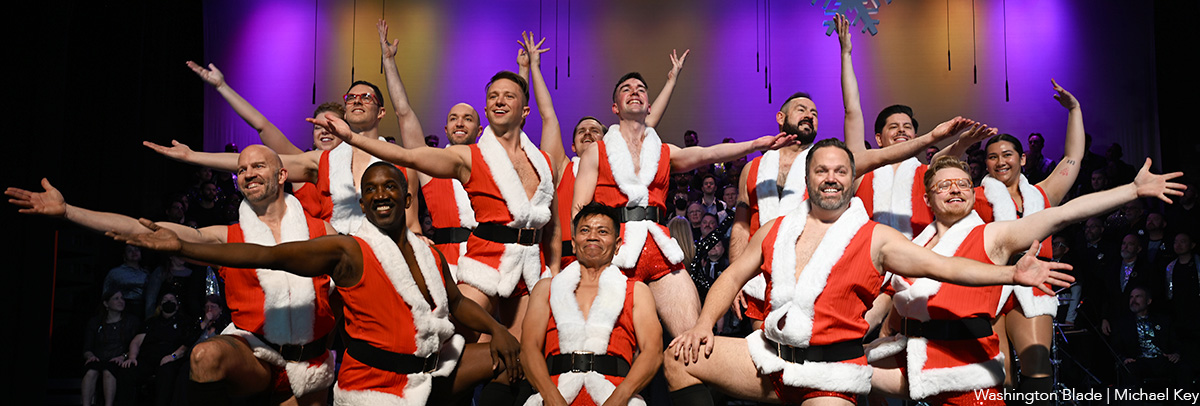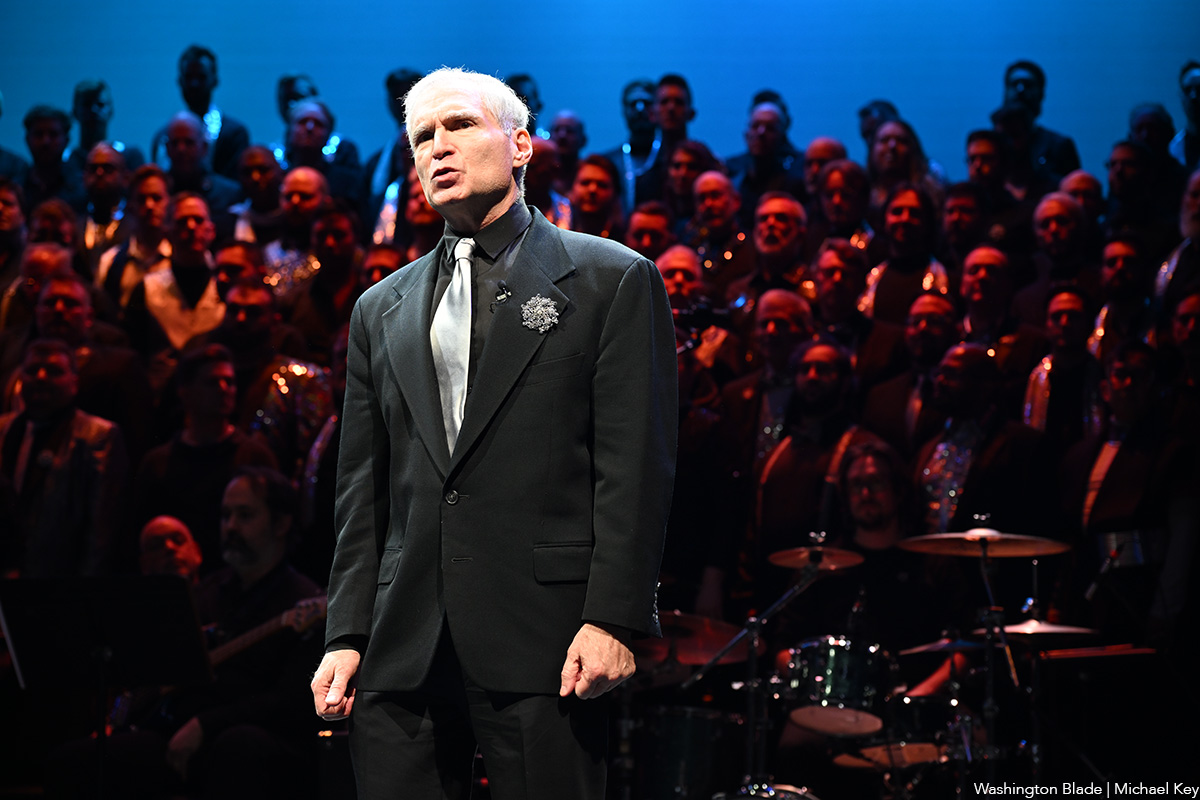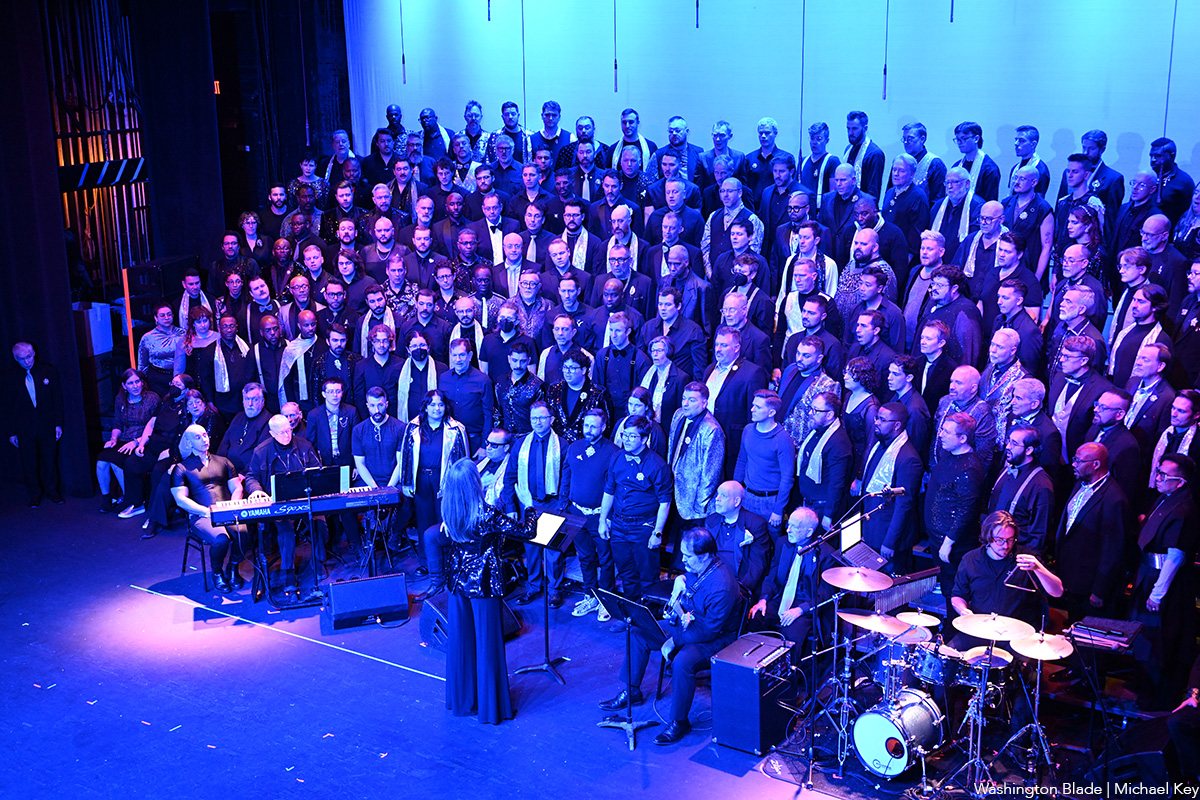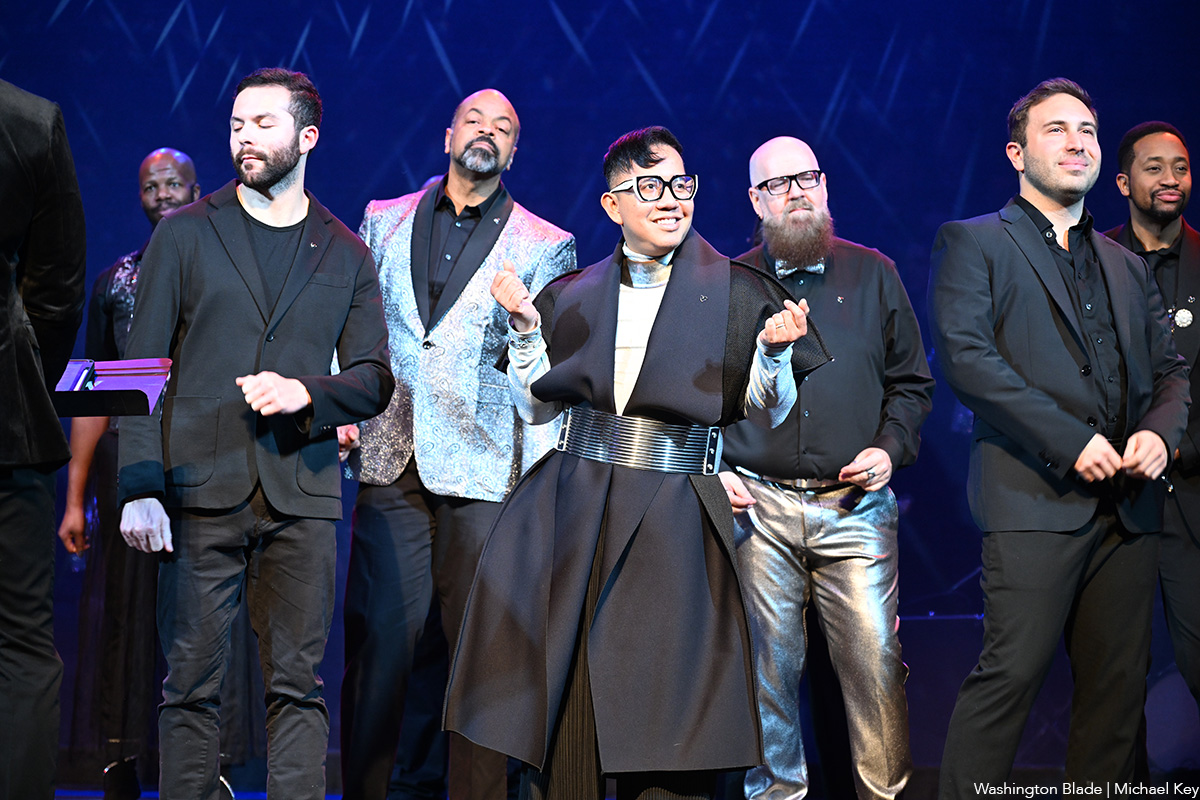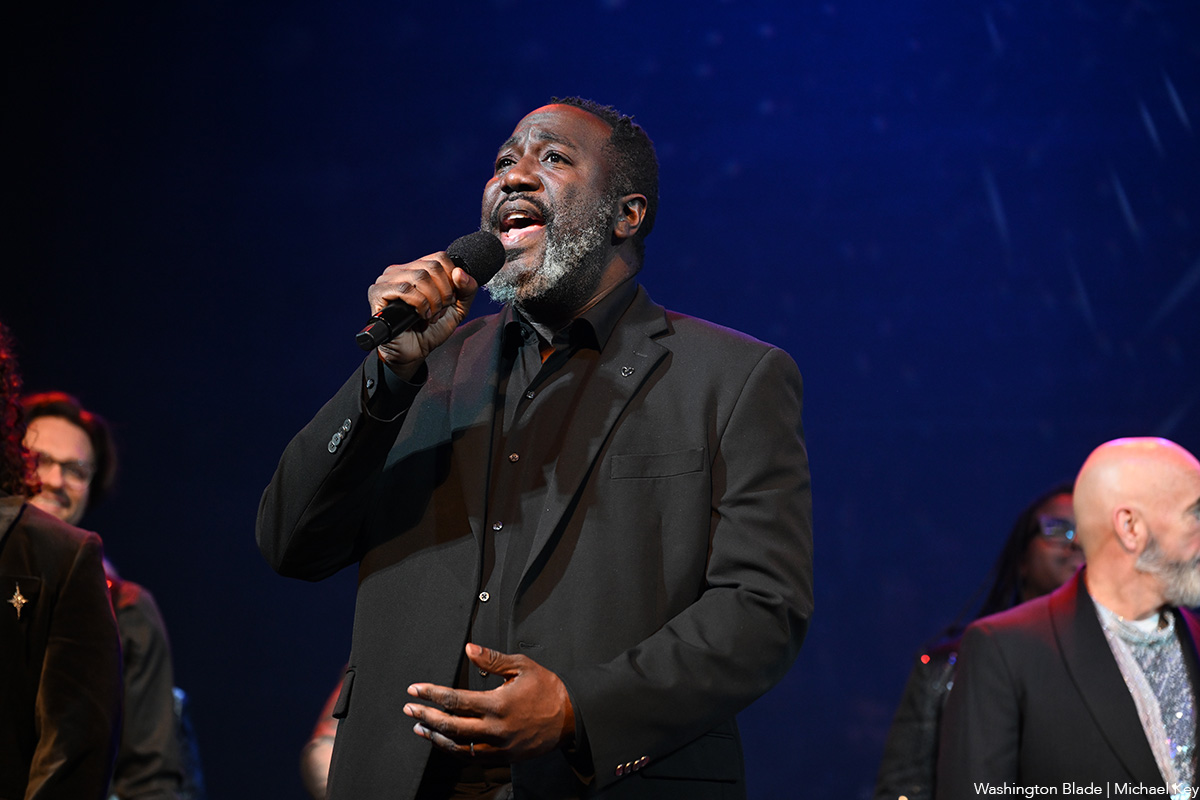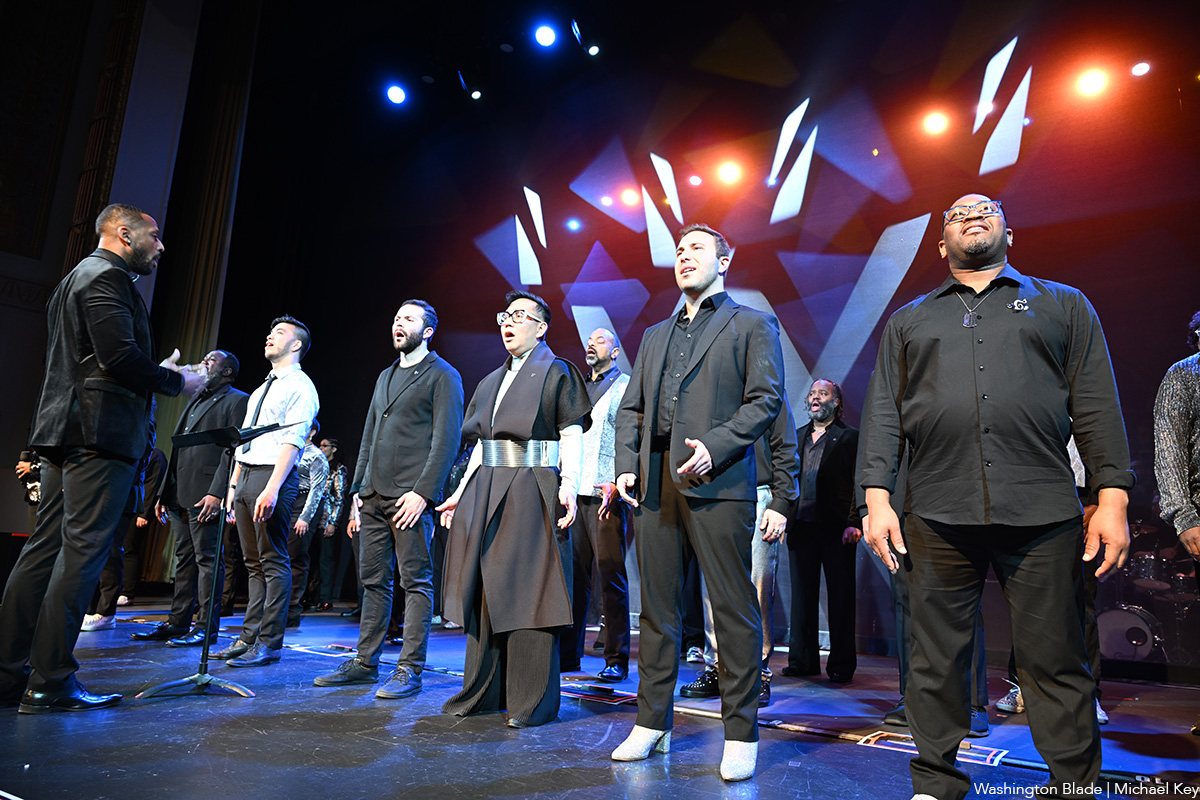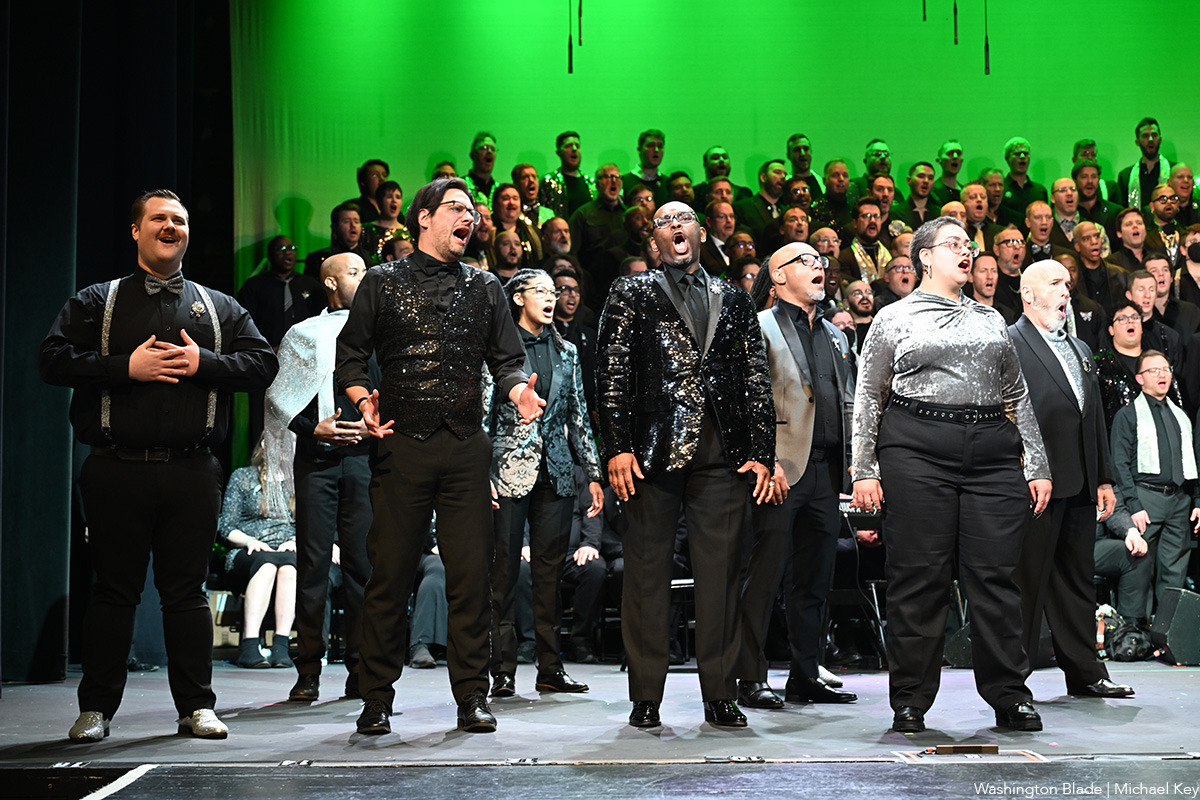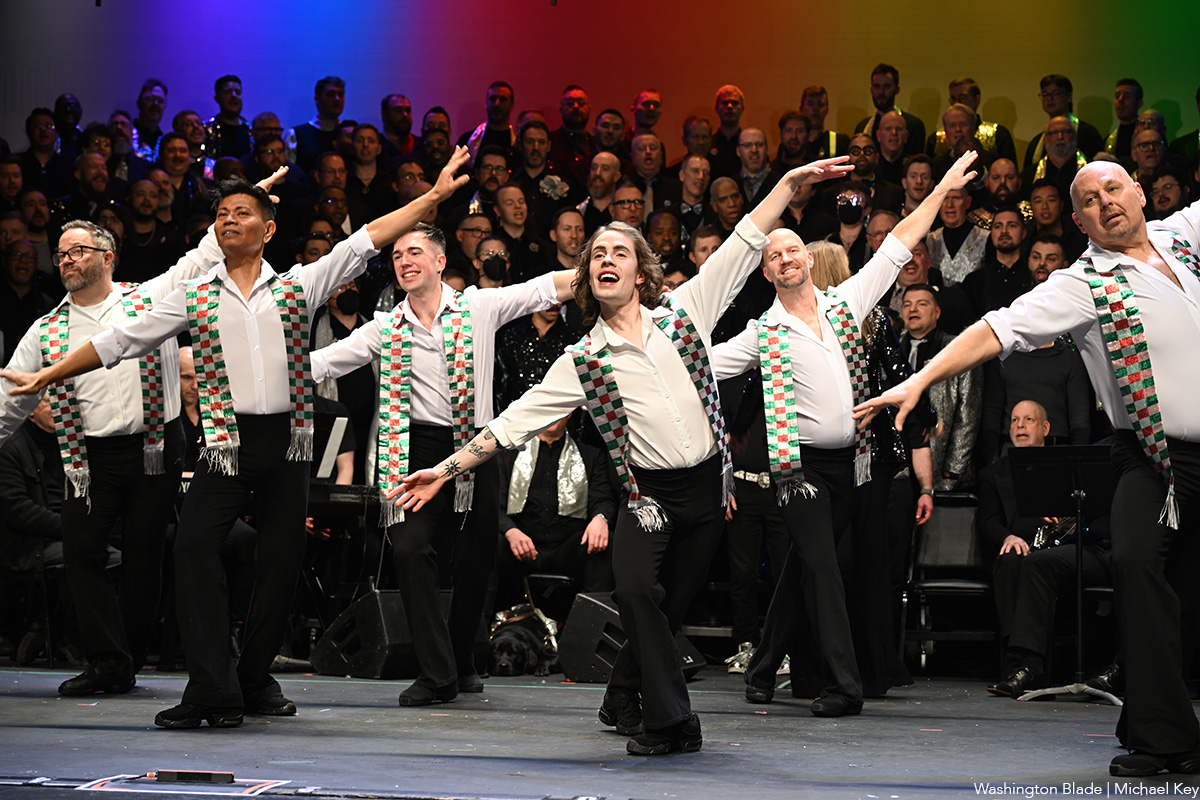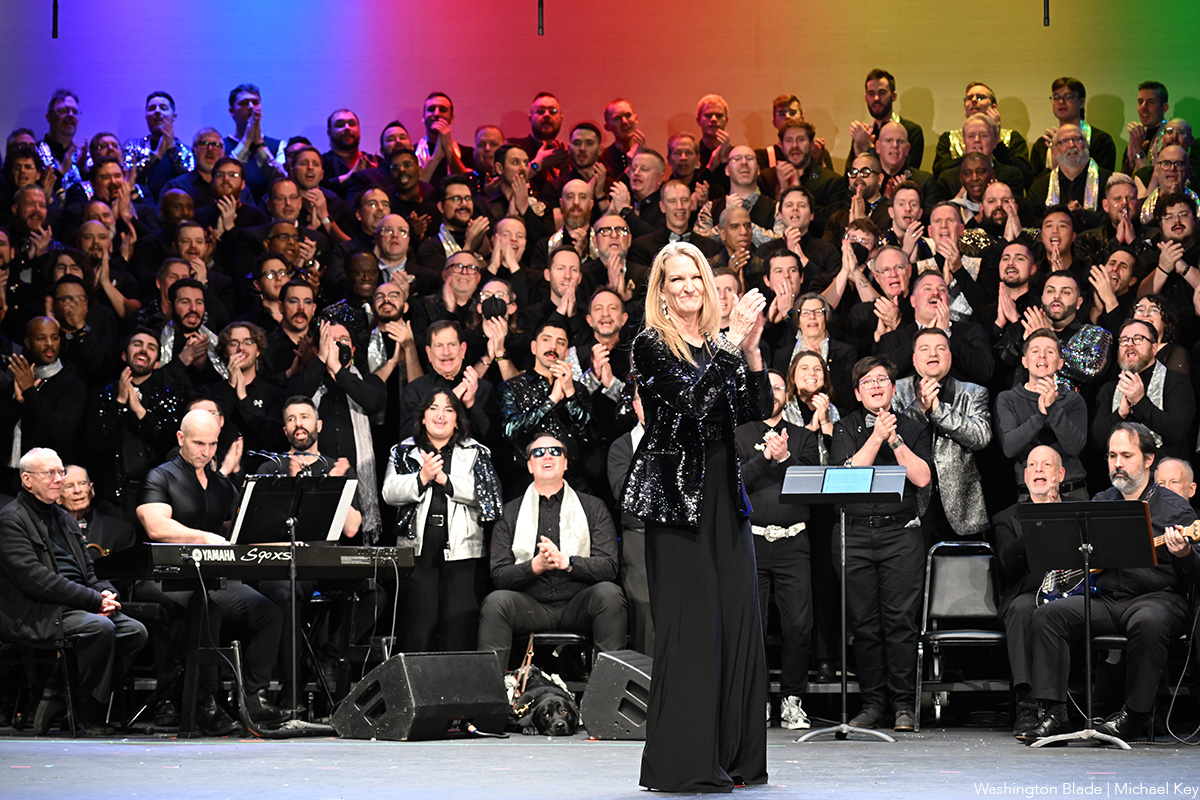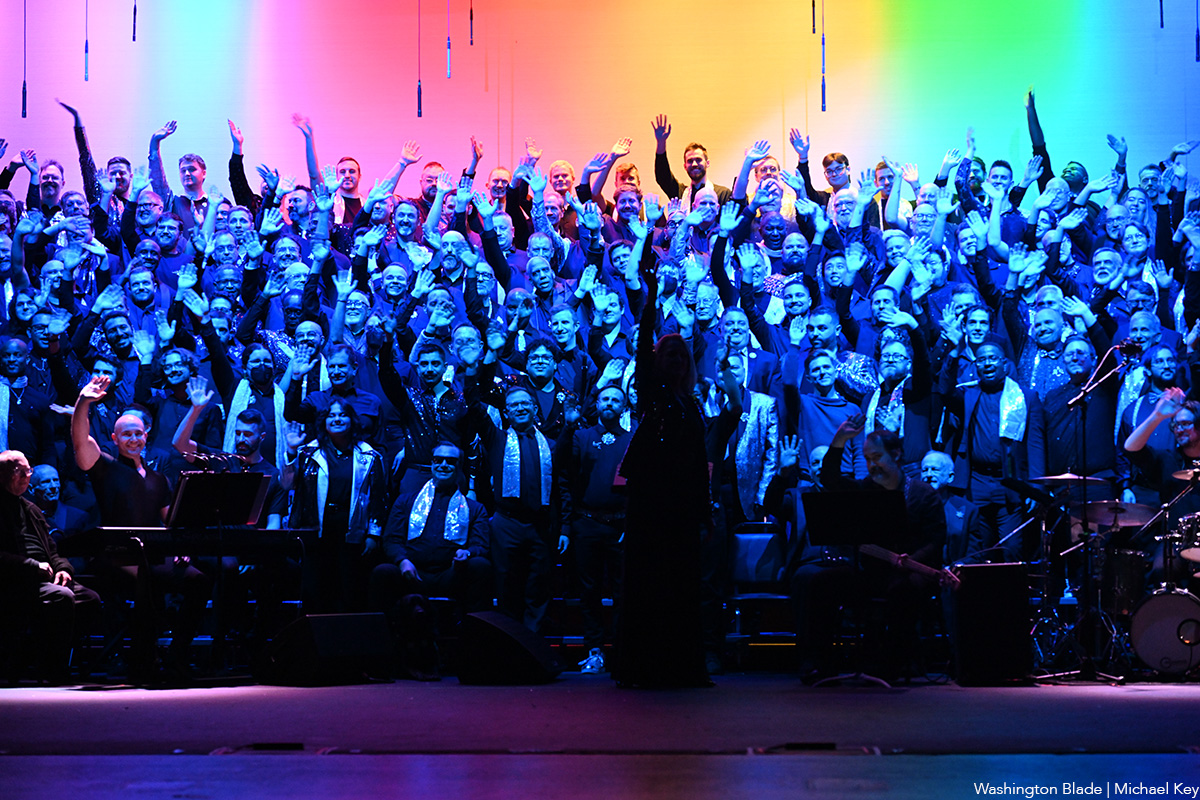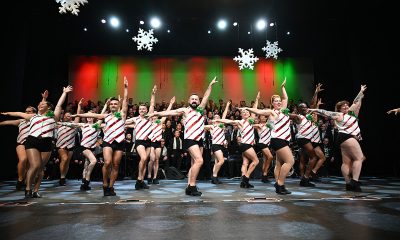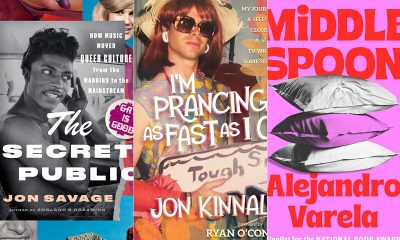Arts & Entertainment
‘Drag Race’ live!
Vets from Logo smash join forces in first-ever ‘Battle of the Seasons’


Pandora Boxx and Manila Luzon, two ‘Drag Race’ vets on the current tour. (Pandora photo by Jose A. Guzman; Manila photo by Kate McLaren; courtesy Producer Entertainment Group, LLC)
‘RuPaul’s Drag Race: Battle of the Seasons’
Tuesday at 9 p.m.
9:30 Club
815 Vine St., N.W.
$30
“RuPaul’s Drag Race,” the popular Logo television show, swaps entertaining on the small screen for performing on the local stage on its tour, “RuPaul’s Drag Race: Battle of the Seasons.”
It’s the first tour to feature so many fan favorite contestants in a theater venue. Among those slated to appear are Sharon Needles, Manila Luzon, Pandora Boxx, Alaska Thunderfuck, Ivy Winters, Carmen Carrera, Mimi Imfurst, Michelle Visage and Phi Phi O’Hara. The tour comes to Washington Tuesday night at the 9:30 club.
The tour showcases the talents of each performer and includes lip-syncing, dancing, comedy and more. There was a previous tour, the “Absolut Drag Race Tour,” but this tour only featured the season winner and runners-up. “Battle of the Seasons” is the first tour to include so many popular “Drag Race” alums.
The show — as one would expect — has been enormously helpful in terms of visibility for those involved.
Pandora Boxx, real name Michael Steck, was a contestant on the second season of “Drag Race” who came in fifth. Since the show, the New York native has been touring the world, started doing stand-up comedy and starred in his own off-Broadway show “Lick This Boxx!”
“’RuPaul’s Drag Race’ was an amazing platform to get things started,” Boxx says. “It’s fun to see men dress up. Everyone loves Halloween.”
Her drag persona was formed before the show but the show’s influence on her career has been significant. She says she learned more about comedy from the experience.
“It took me from a small town queen to something bigger,” Boxx says.
Manila Luzon, real name Karl Westerberg, was the runner-up on the third season. Since the show, Luzon has left her long-time home New York and moved to Los Angeles. She has been touring the world and performing her own original music. Her drag persona was also fully formed before the show.
“Manila Luzon is an extension of Karl,” Luzon says.” I wear a wig and sparkly heels and thought I might as well perform my own music.”
She thinks the show’s success is due to its diverse audience and is excited to see that reflected on the tour.
“A lot of us have performed in gay nightclubs that have a certain demographic,” Luzon says. “But the show demographic is much bigger than just gays. There are mothers and daughters, families and straight couples who watch. I’m so used to seeing 21-year-old gay boys in nightclubs so this will be different on tour.”
Luzon also thinks the show caters to different popular reality show types.
“It’s like ‘American’s Top Model,’ ‘Real Housewives’ and ‘Basketball Wives’ all in one.”
Boxx and Luzon admit the confines of a reality show can be hard. Boxx likens it to a prison with no contact allowed to the outside world during filming. Luzon is excited to connect with fans now that the show is over. She says once reality shows end, it can be hard for fans to keep up with contestants. The tour allows fans the chance to reconnect with their favorites right in their neighborhood.
The driving force behind the show has been RuPaul. She has become a legendary drag performer and her influence has helped to shape the contestant’s careers and inspire them.
Boxx says RuPaul is friendly and fun but maintains professionalism. She tries to have limited contact with contestants during filming of “RuPaul’s Drag Race” because she’s judging. However, she remained backstage much more during “RuPaul’s Drag U,” the show that gives drag makeovers to three women, where both Boxx and Luzon served as “drag professors.”
“RuPaul is very hands-on with the show. You can really see his influence. He’s inspiring as a person and as a drag queen. I was able to see what a drag queen can have,” Luzon says.
Another facet to the show is Sharon Needles, perhaps the most famous of all “Drag Race” vets. Needles has made a name for herself by being known as the punk rock party girl. Boxx and Luzon say Needles is just as outrageous in real life as on the show. They say her interesting antics, such as being carried out in a coffin, are a big part of her allure.
One trait these “Drag Race” contestants share is that they aren’t from the District. In the show’s history only one drag performer, Tatiana from Falls Church, Va., has been from the local area. Boxx and Luzon believe the reason is a combination of interest and audition tapes.
“It certainly isn’t for a lack of talent. San Francisco has never had any performers on the show either. You really need an amazing audition tape,” Boxx says.
Luzon said the show isn’t a goal for a lot of drag performers.
“Every drag queen in America isn’t thinking ‘Maybe I should be on ‘Drag Race.’ There are also so many girls who don’t get picked. But they have to keep trying and audition again.”
Now that the show is over, the competition has shifted for the contestants. Boxx says there is less pressure because no one is getting eliminated, but there is still a friendly competition. She believes it pushes each performer to give her best effort.
As the tour continues, Boxx says the real story of the tour is what happens off stage. Once while on tour, their bus broke down and they filmed the debacle for YouTube. Boxx says the after-show antics can be just as shocking as the performance itself.
“Put all of us on a bus and that’s the real entertainment,” she says. “The real show is behind the scenes.”
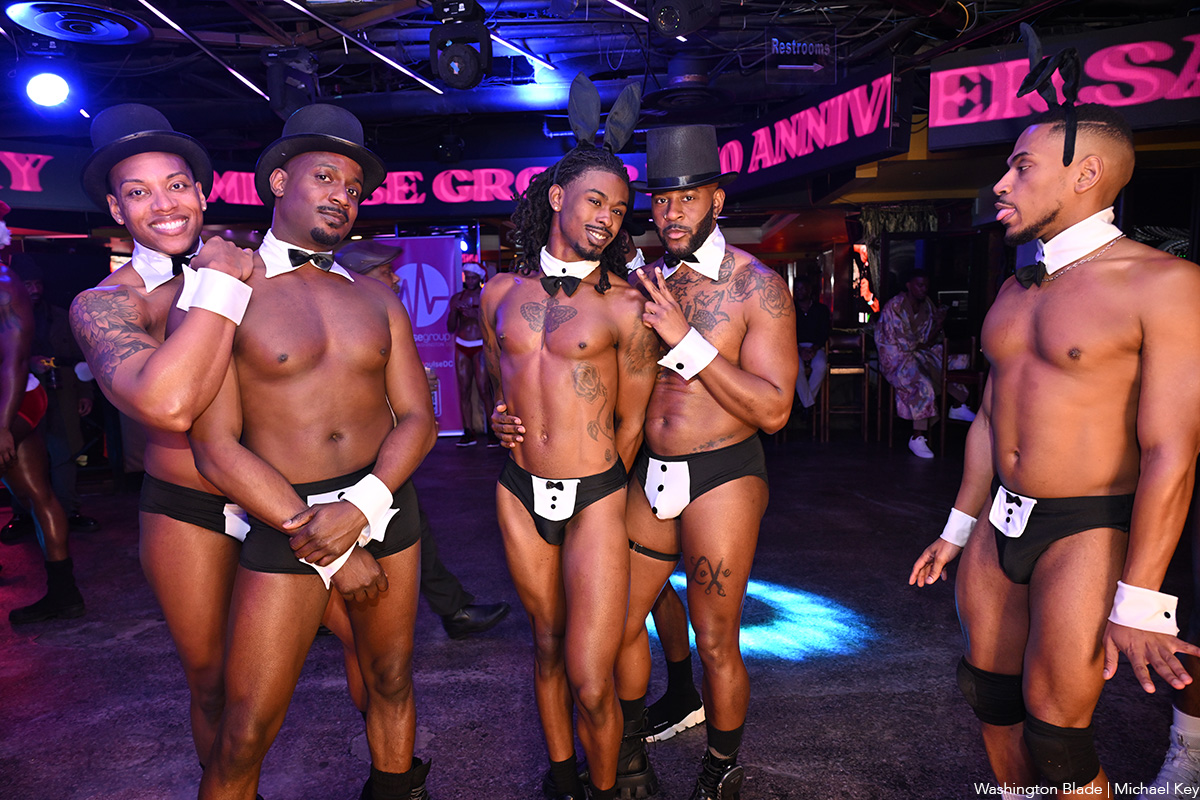
Impulse Group DC held “10’s Across the Board: A Celebration of 10 Years” at Bravo Bravo (1001 Connecticut Ave., N.W.) on Sunday, Dec. 14. Impulse Group DC is a volunteer-led 501(c)(3) and affinity group of AIDS Healthcare Foundation dedicated “to engaging, supporting, and connecting gay men” through culturally relevant health and advocacy work.
(Washington Blade photos by Michael Key)
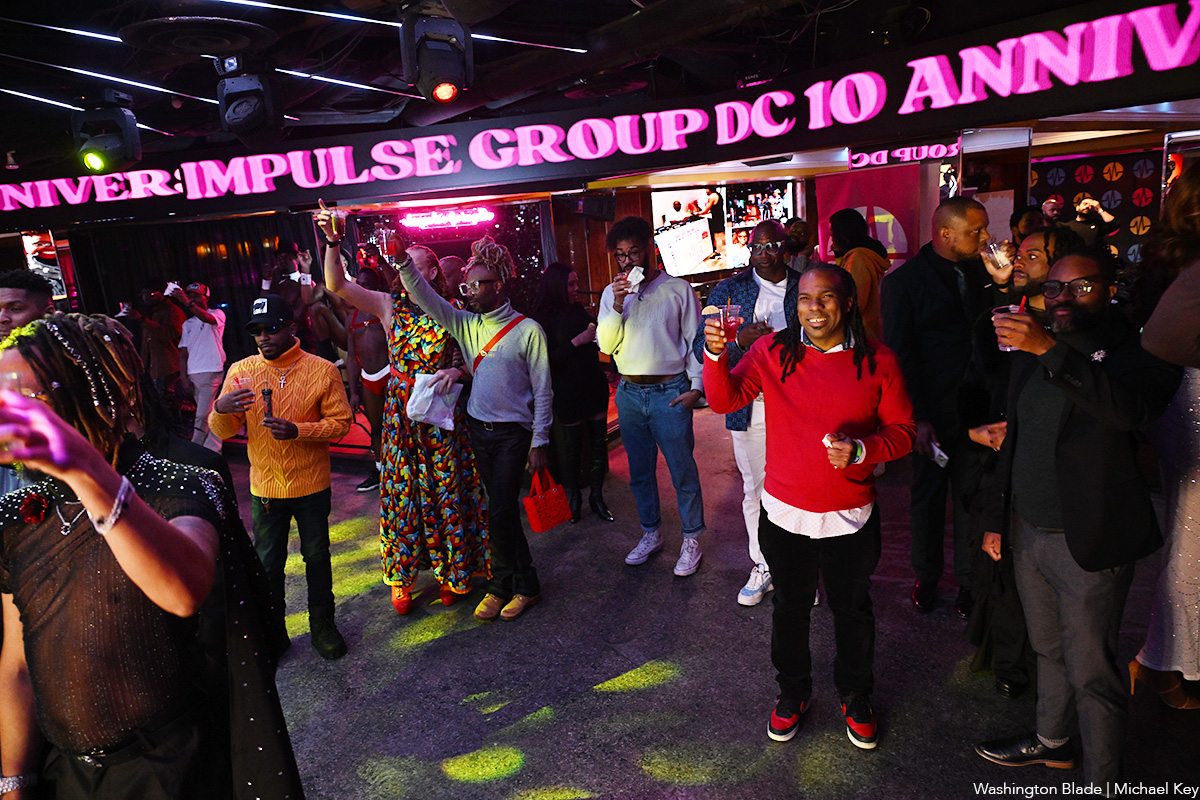
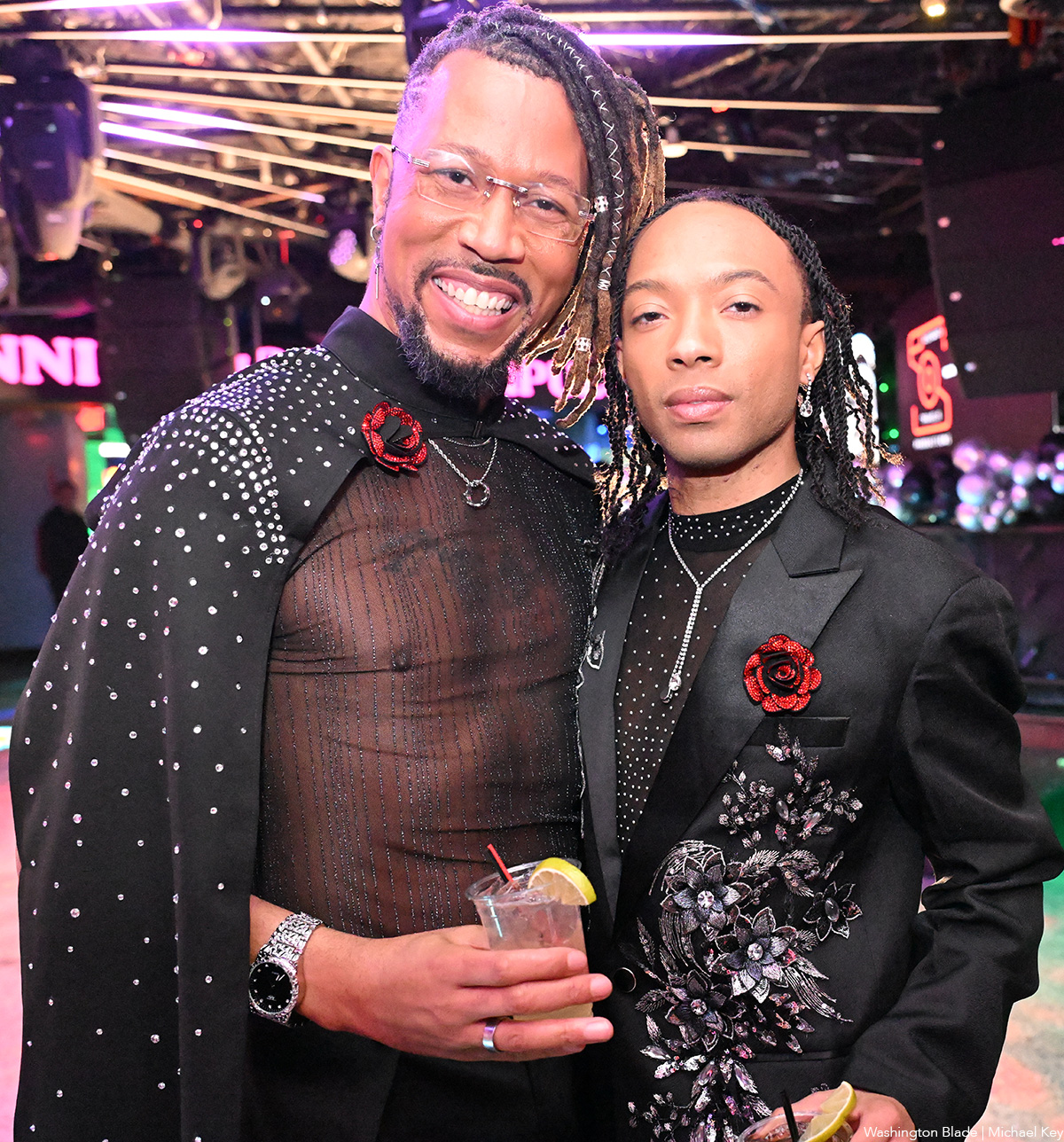
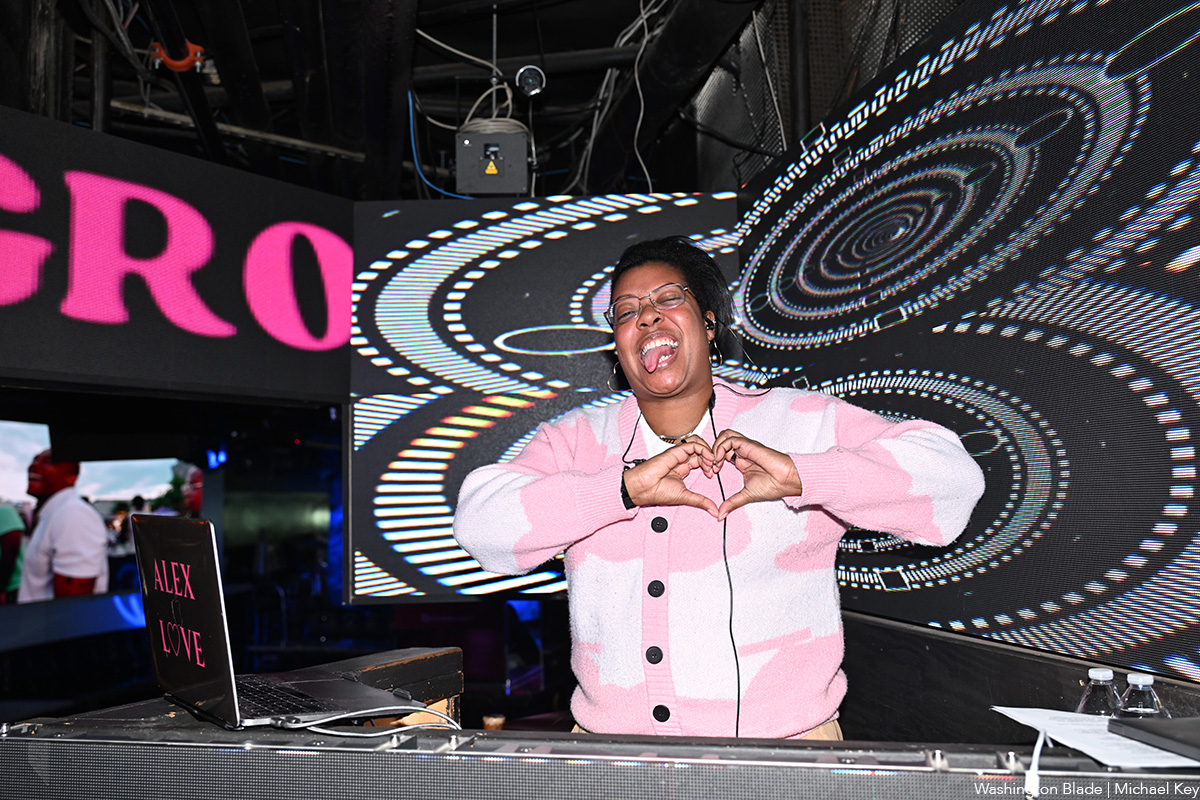
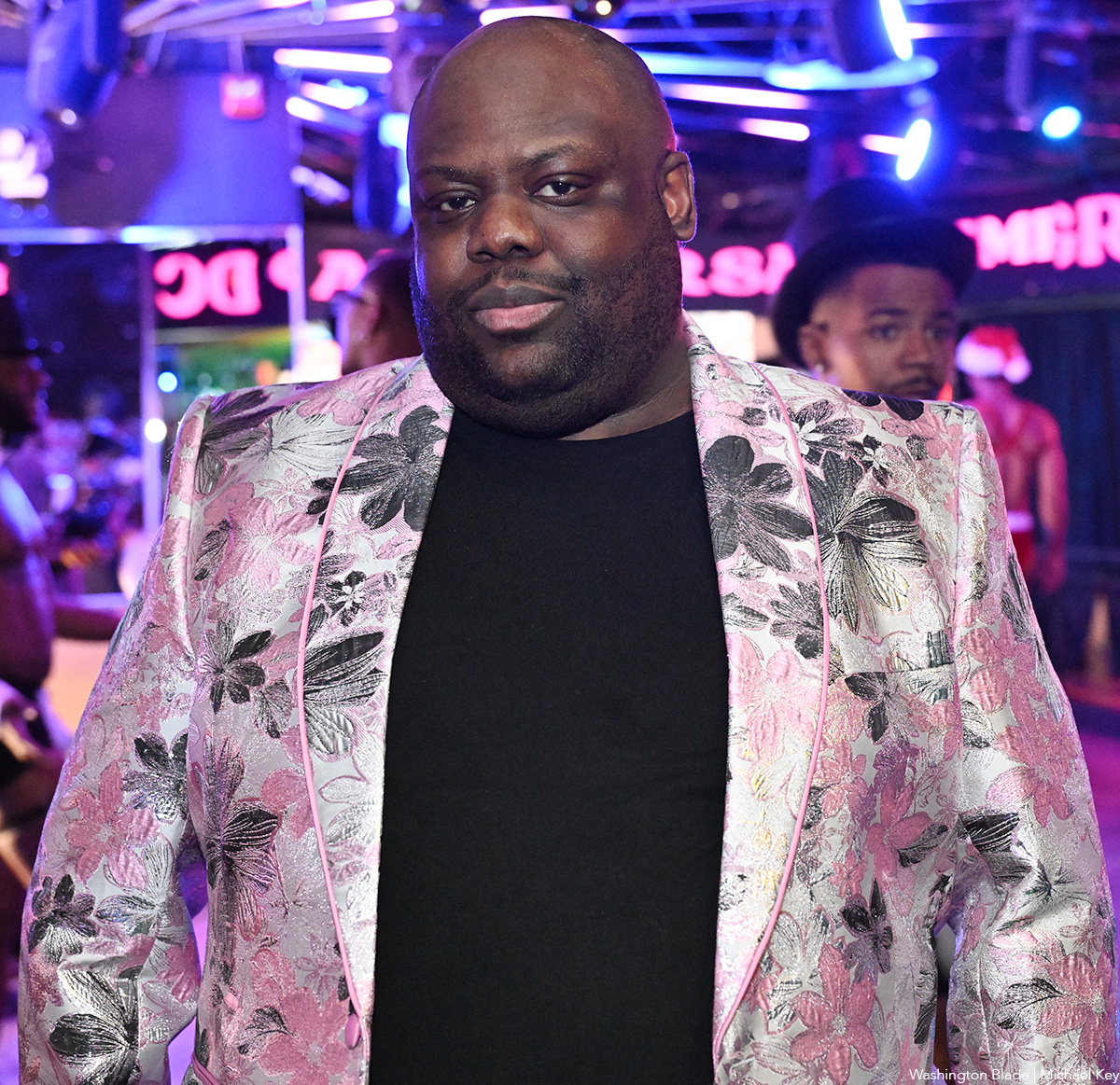

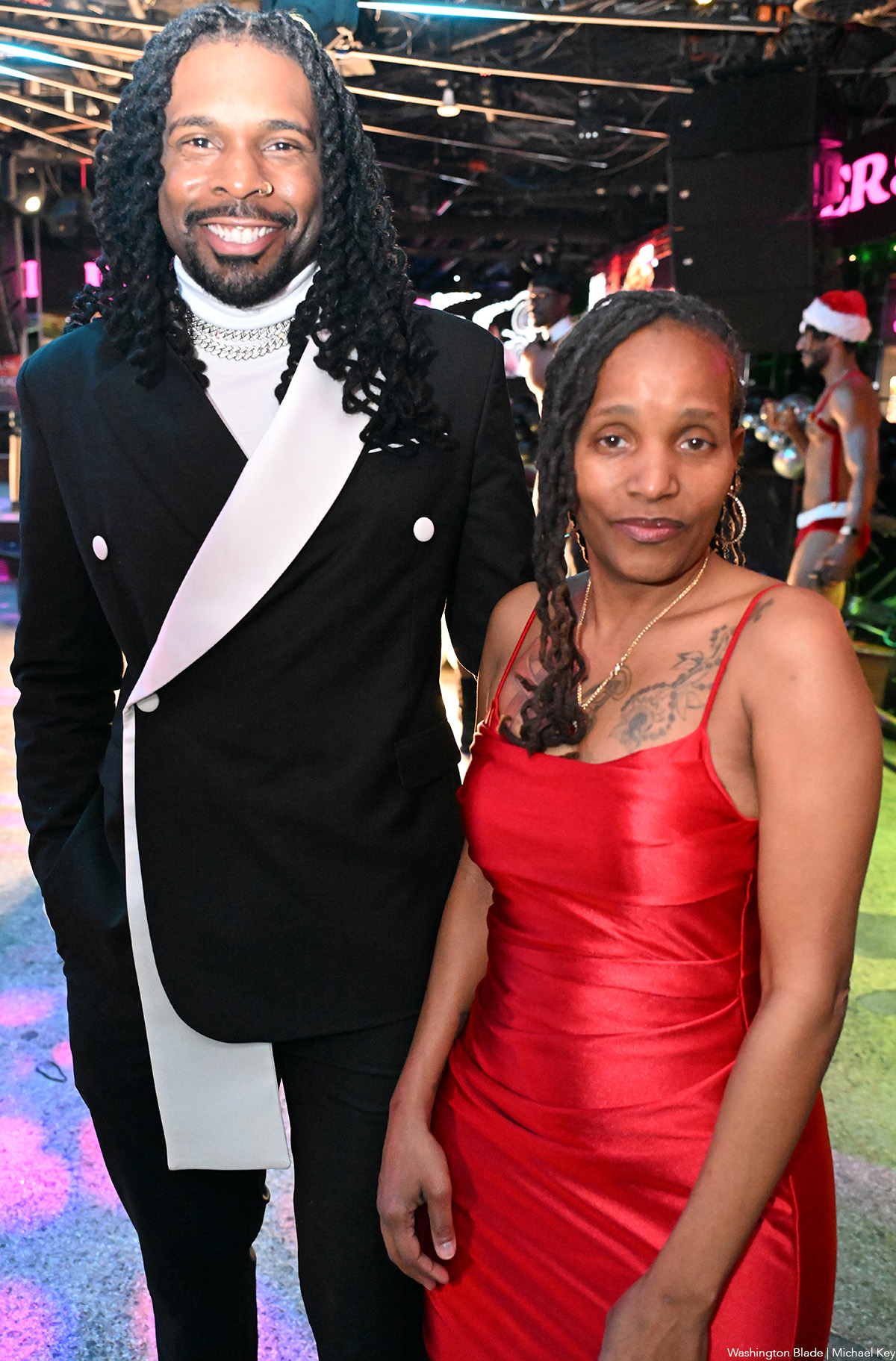
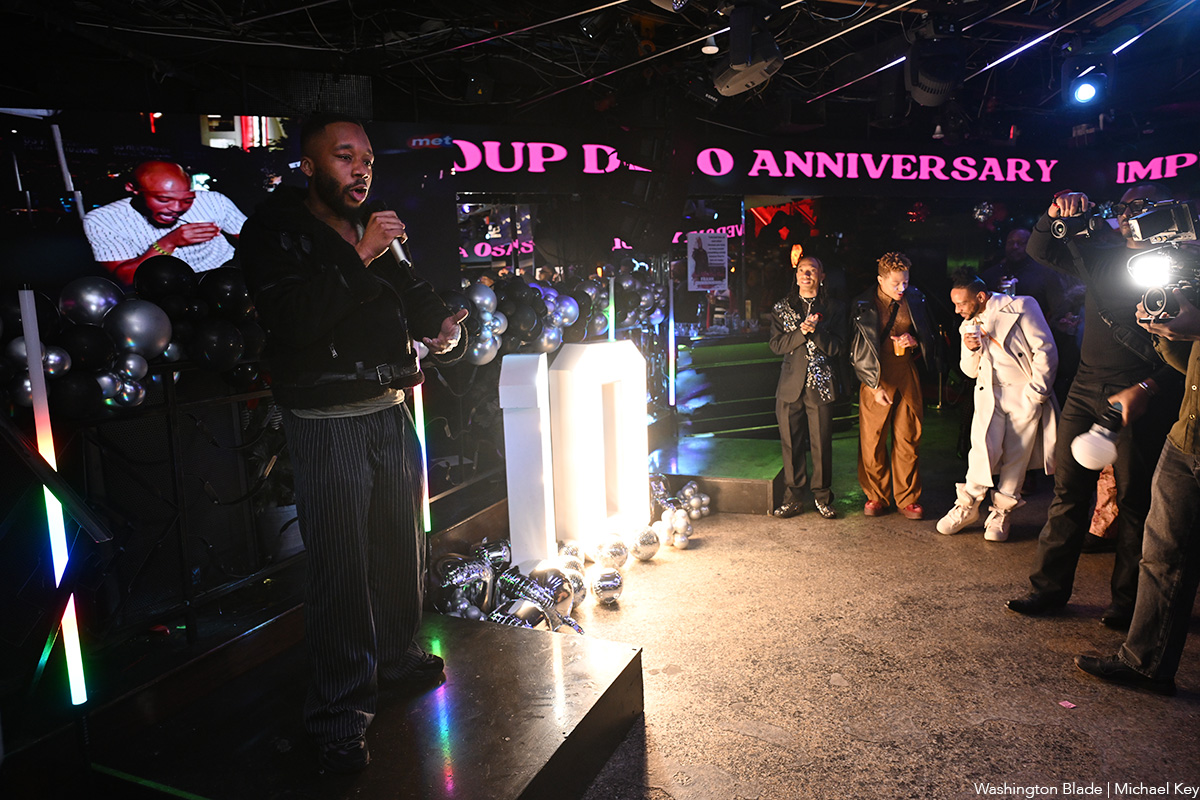
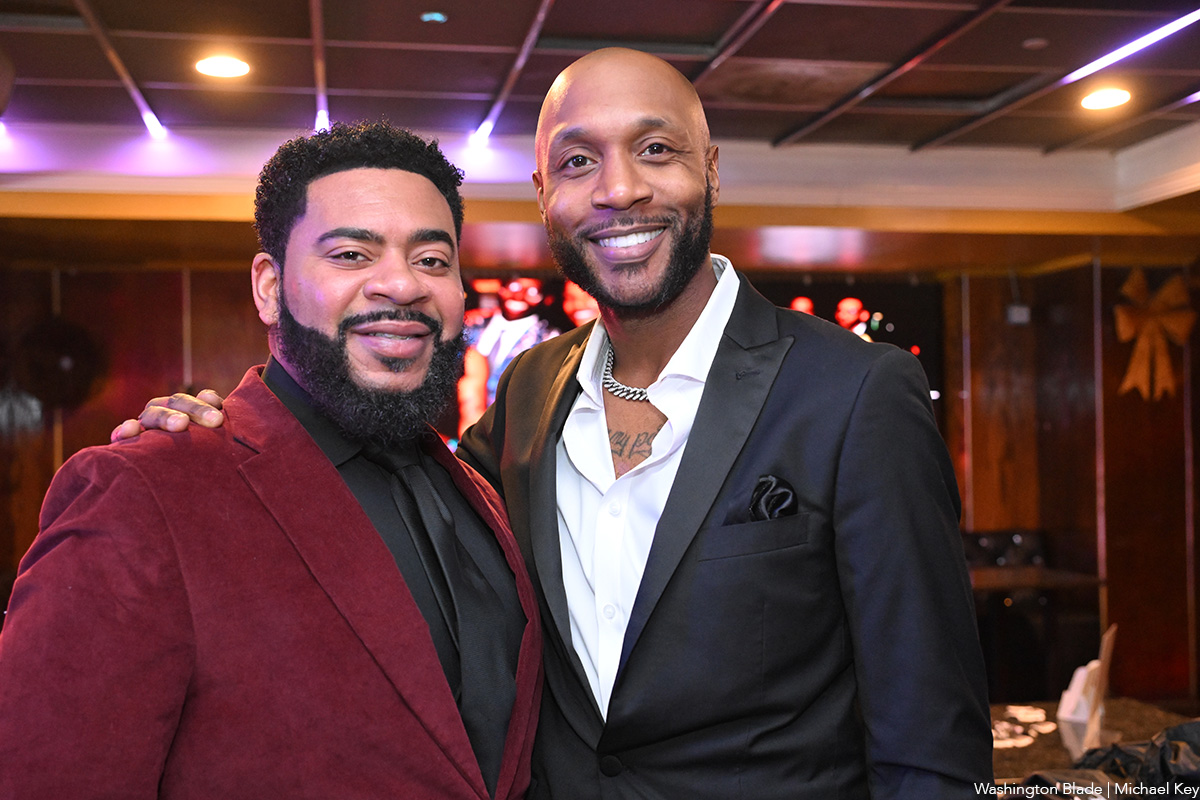
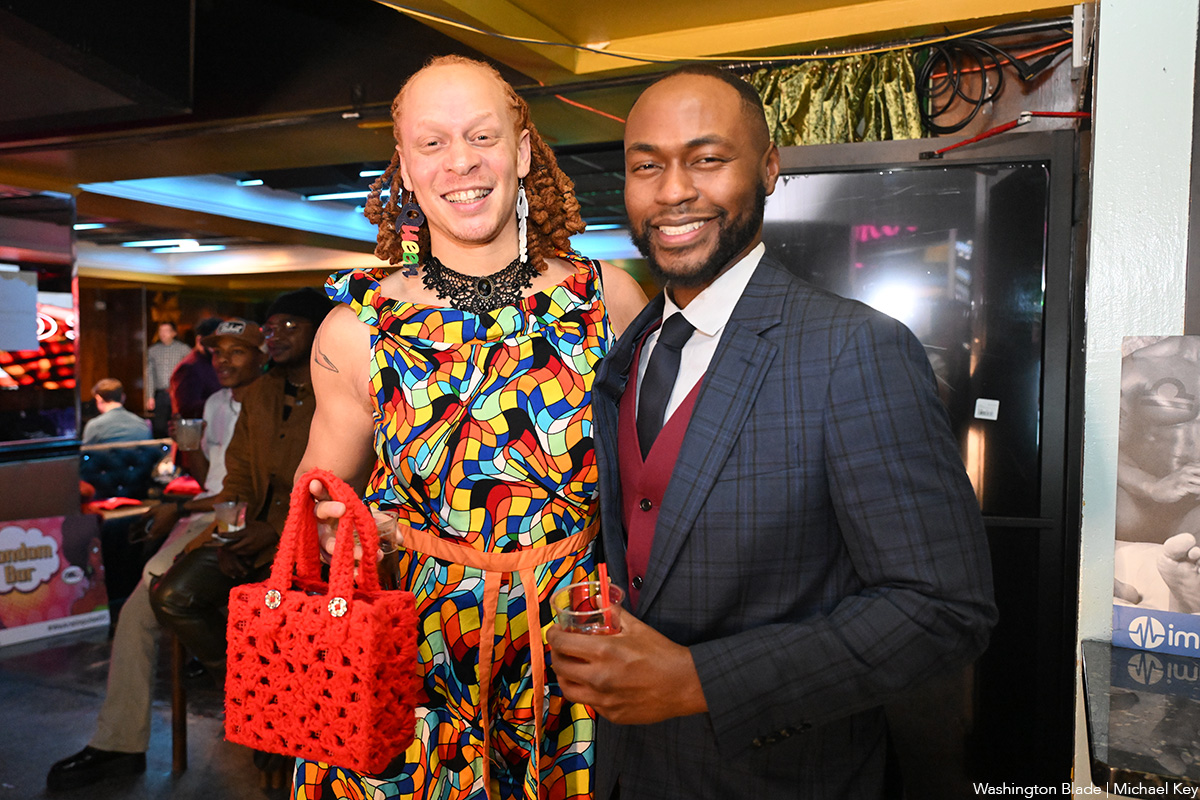
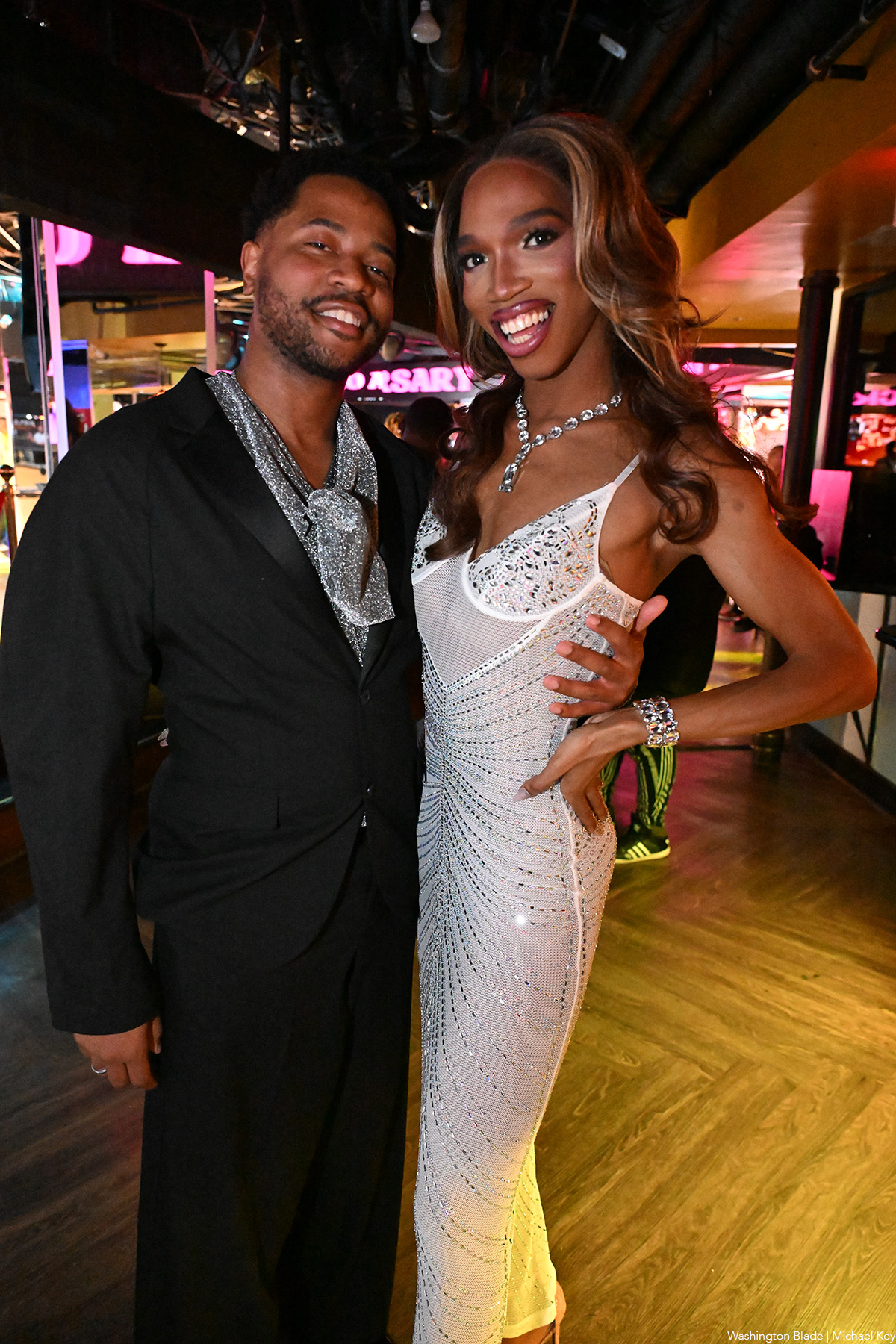
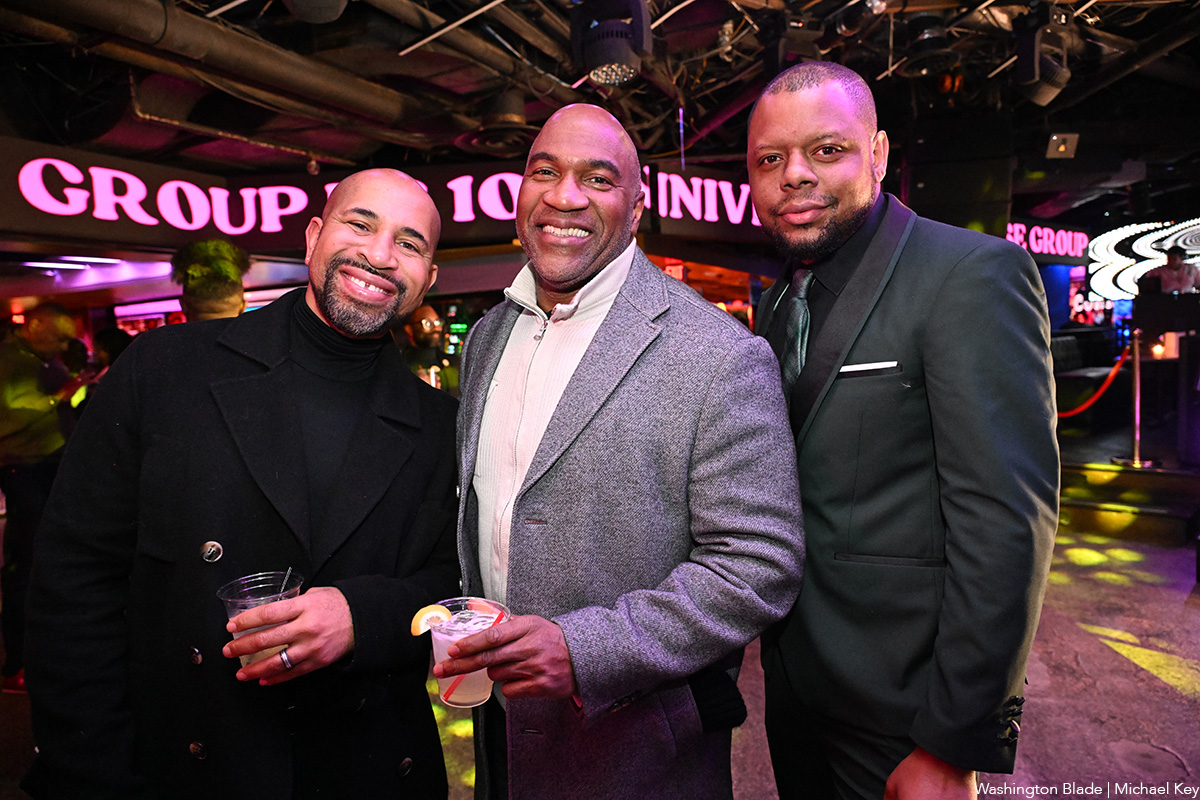
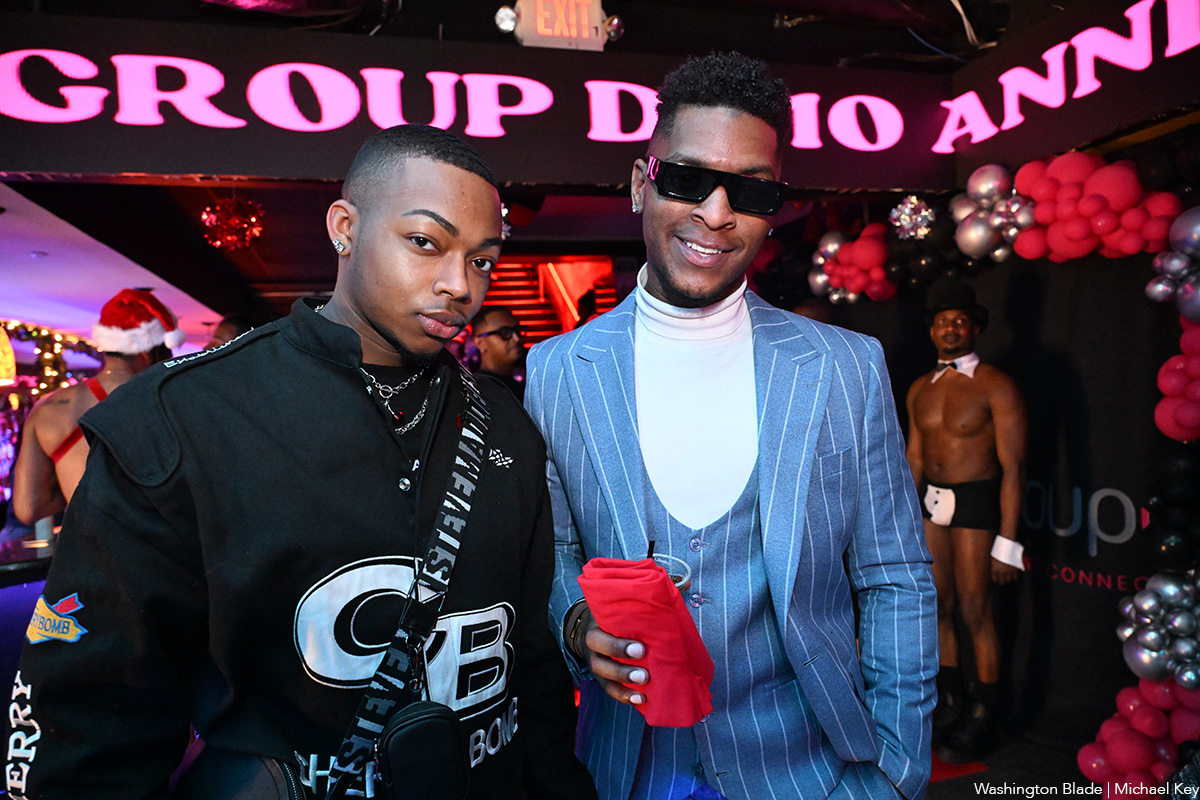
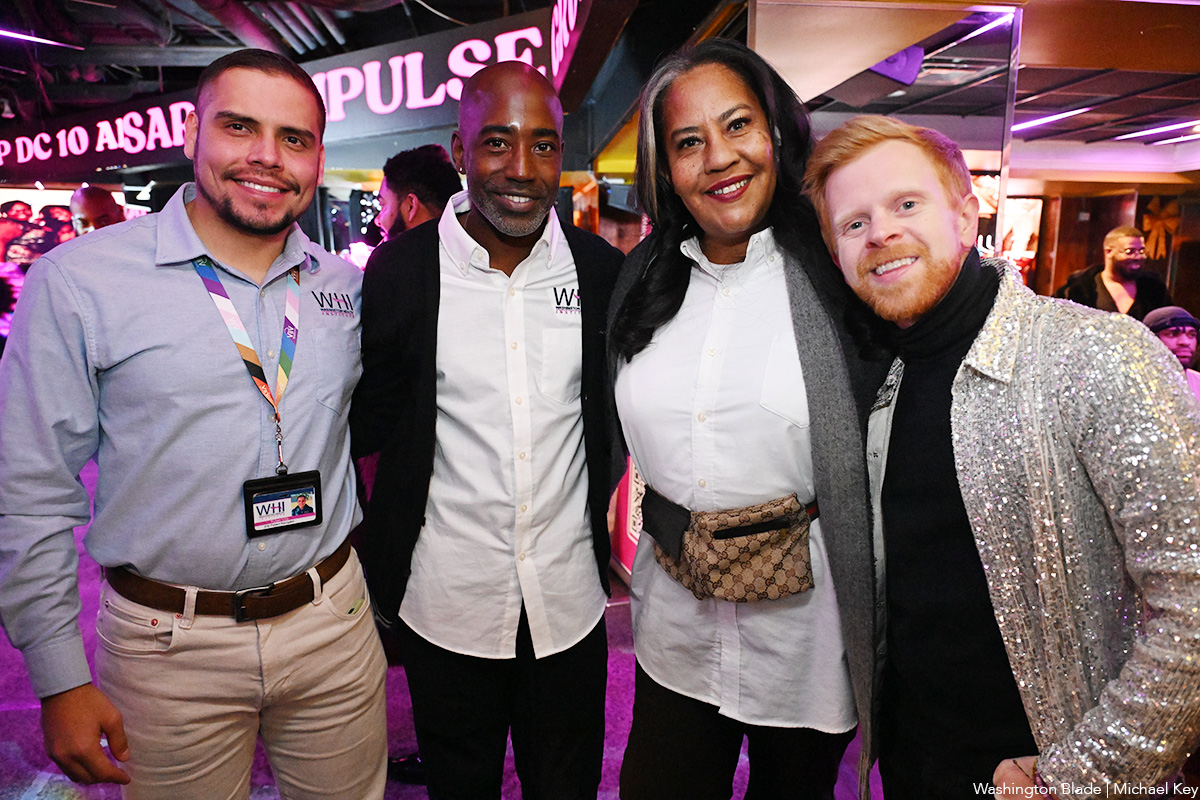

Rob Reiner, most known for directing untouchable classics like “The Princess Bride,” “Misery,” “When Harry Met Sally…,” and “Stand by Me,” died Dec. 14 alongside his wife, Michele Singer Reiner, in their Los Angeles residence. While investigations are actively underway, sources have told PEOPLE Magazine that the pair’s son, Nick Reiner, killed his parents and has been taken into custody.
Reiner was a master of every genre, from the romantic comedy to the psychological thriller to the coming-of-age buddy movie. But in addition to his renowned work that made him a household name, Reiner is also remembered as a true advocate for the LGBTQ community. In 2009, Reiner and his wife co-founded the American Foundation for Equal Rights, helping fight against California’s Prop 8 same-sex marriage ban. They were honored at the 2015 Human Rights Campaign Las Vegas Gala.
In a statement, HRC President Kelley Robinson said: “The entire HRC family is devastated by the loss of Rob and Michele Reiner. Rob is nothing short of a legend — his television shows and films are a part of our American history and will continue to bring joy to millions of people across the world. Yet for all his accomplishments in Hollywood, Rob and Michele will most be remembered for their gigantic hearts, and their fierce support for the causes they believed in — including LGBTQ+ equality. So many in our movement remember how Rob and Michele organized their peers, brought strategists and lawyers together, and helped power landmark Supreme Court decisions that made marriage equality the law of the land — and they remained committed to the cause until their final days. The world is a darker place this morning without Rob and Michele — may they rest in power.”
Reiner’s frequent collaborators have also spoken out as the industry is in mourning, including figures like Ron Howard and John Cusack.
A joint statement from Jamie Lee Curtis and Christopher Guest (who starred in Reiner’s “This is Spinal Tap”) reads: “Christopher and I are numb and sad and shocked about the violent, tragic deaths of our dear friends Rob and Michele Singer Reiner and our ONLY focus and care right now is for their children and immediate families and we will offer all support possible to help them. There will be plenty of time later to discuss the creative lives we shared and the great political and social impact they both had on the entertainment industry, early childhood development, the fight for gay marriage, and their global care for a world in crisis. We have lost great friends. Please give us time to grieve.”
While attending the 2019 HRC Los Angeles Dinner, Reiner spoke out about the need for equality: “We have to move past singling out transgender, LGBTQ, black, white, Jewish, Muslim, Latino. We have to get way past that and start accepting the idea that we’re all human beings. We’re all human beings, we all share the same planet, and we should all have the same rights, period. It’s no more complicated than that.”
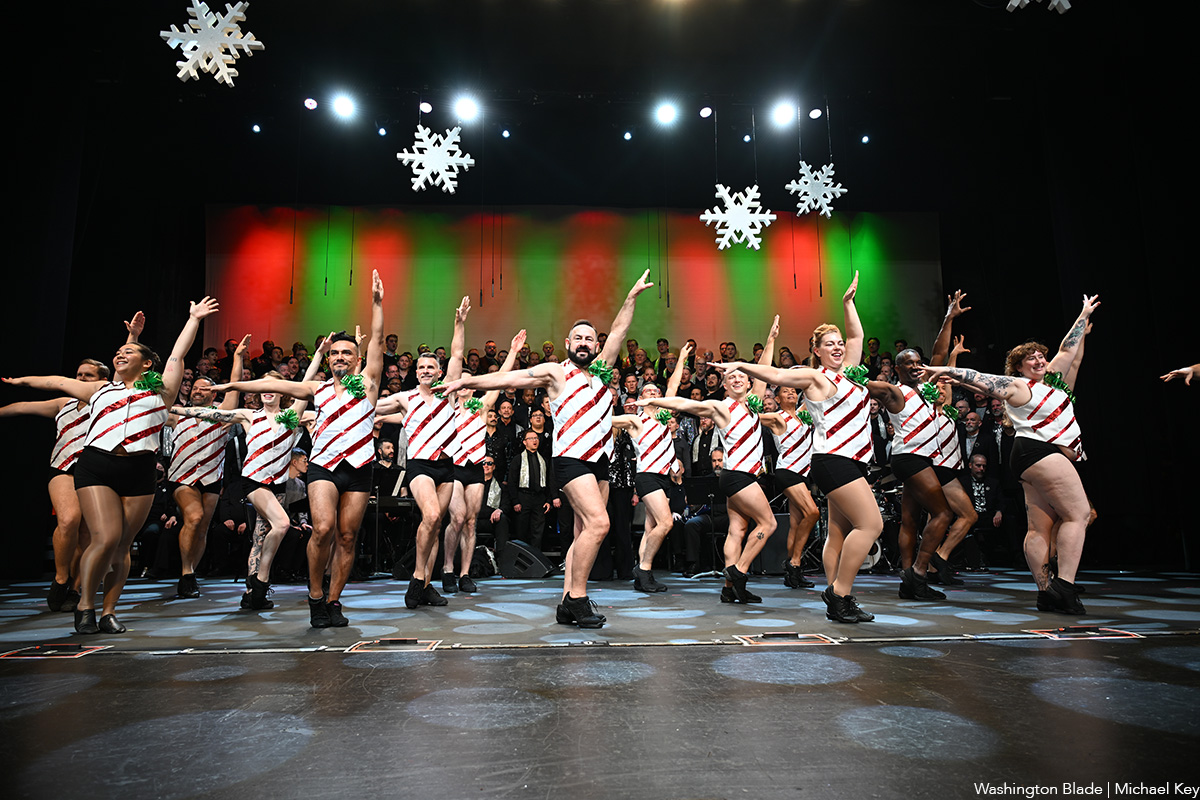
The Gay Men’s Chorus of Washington perform “The Holiday Show” at Lincoln Theatre (1215 U St., N.W.). Visit gmcw.org for tickets and showtimes.
(Washington Blade photos by Michael Key)
